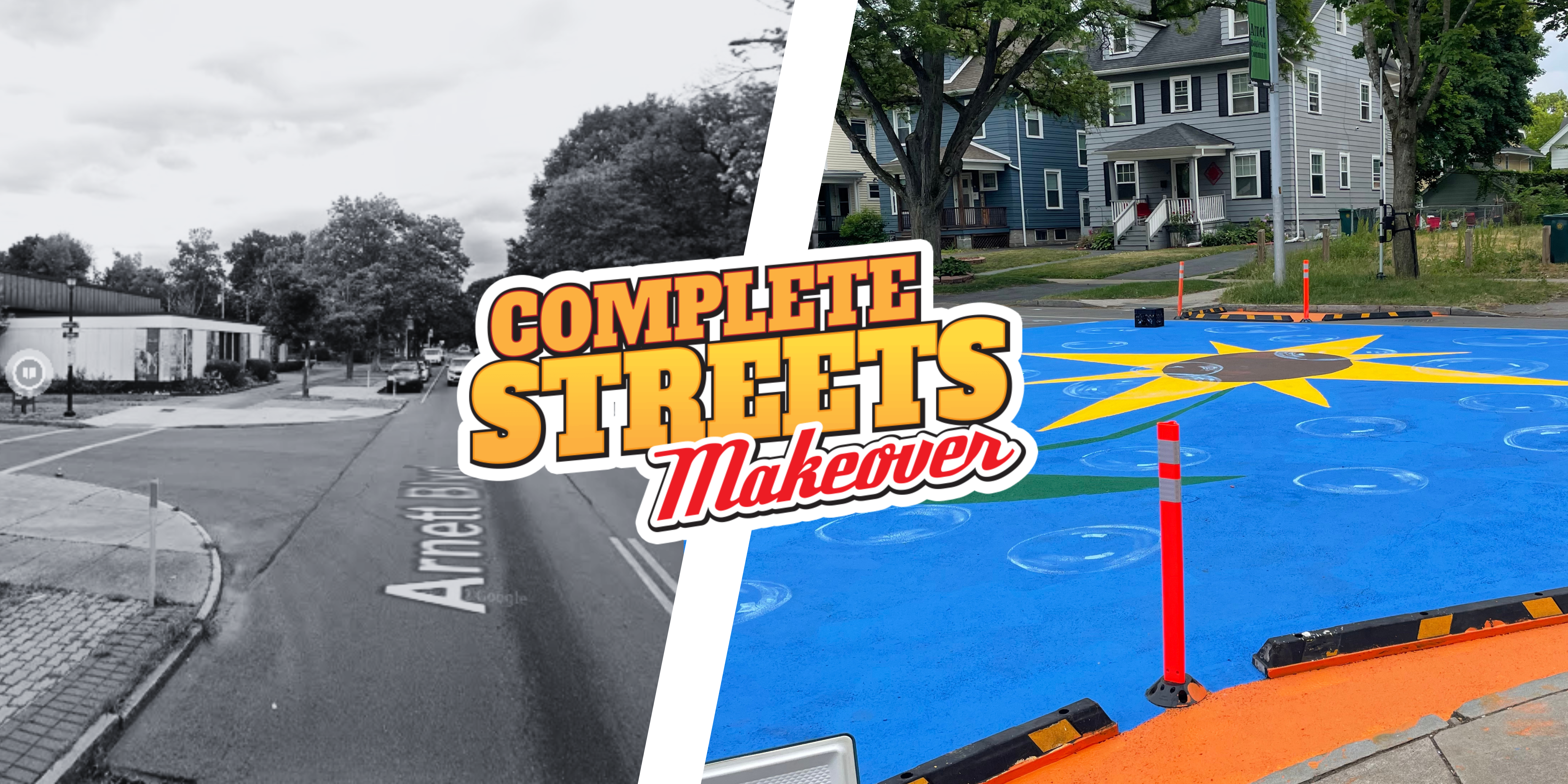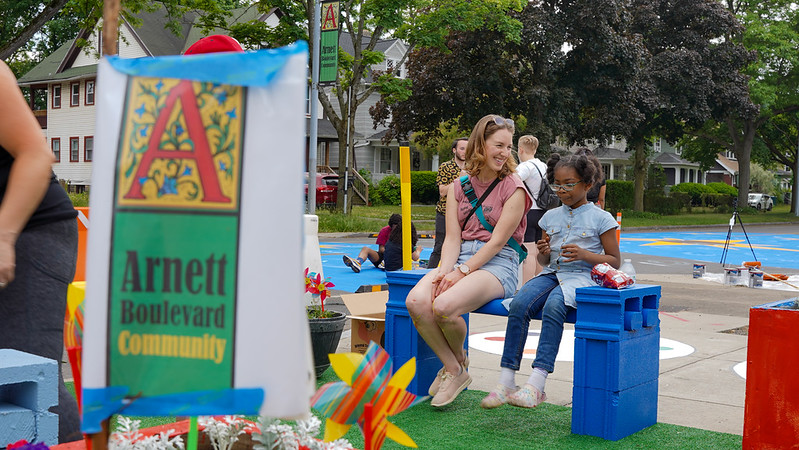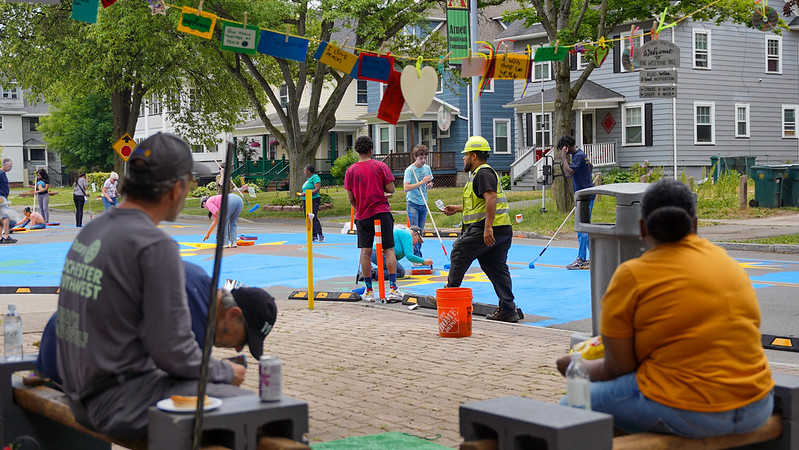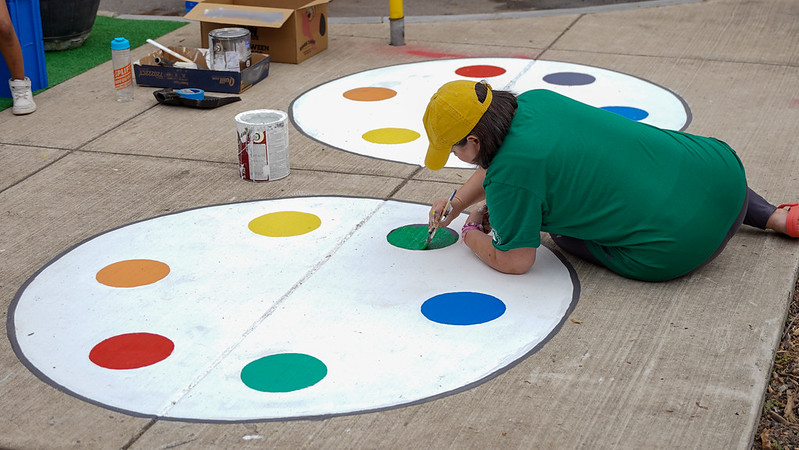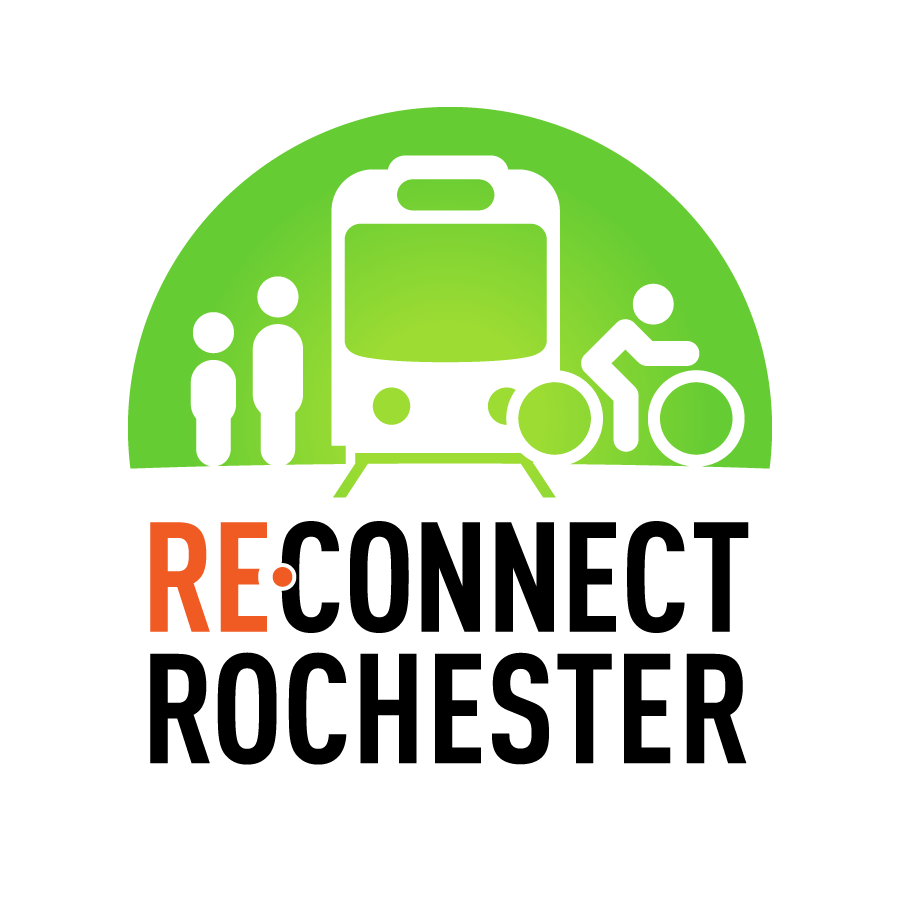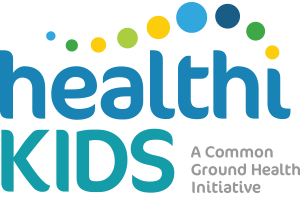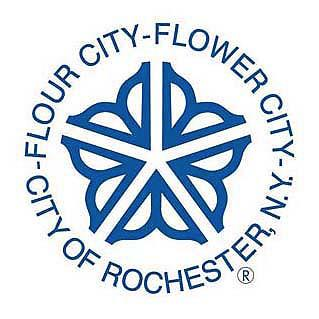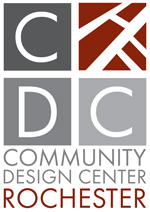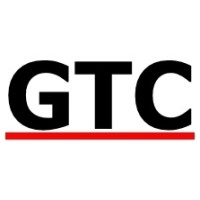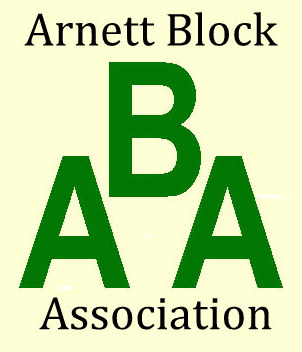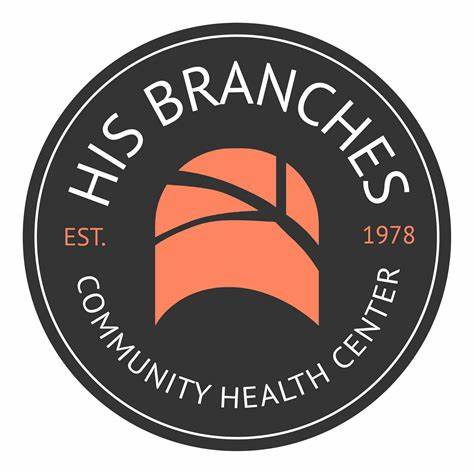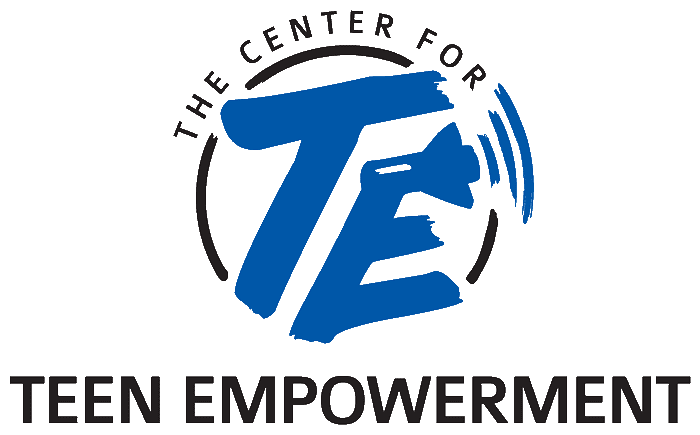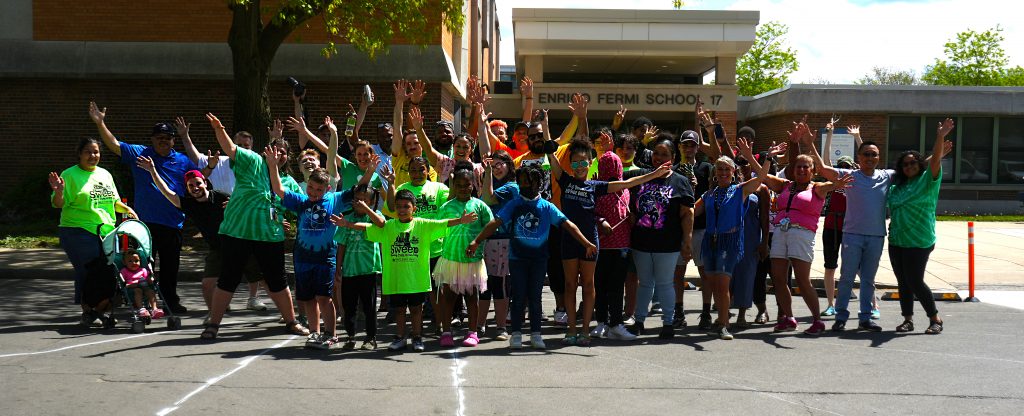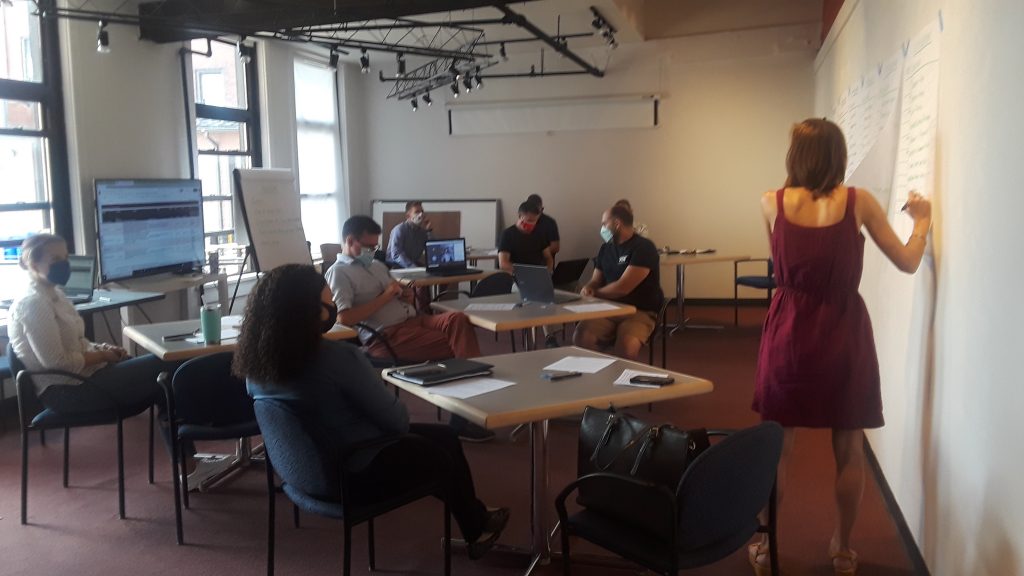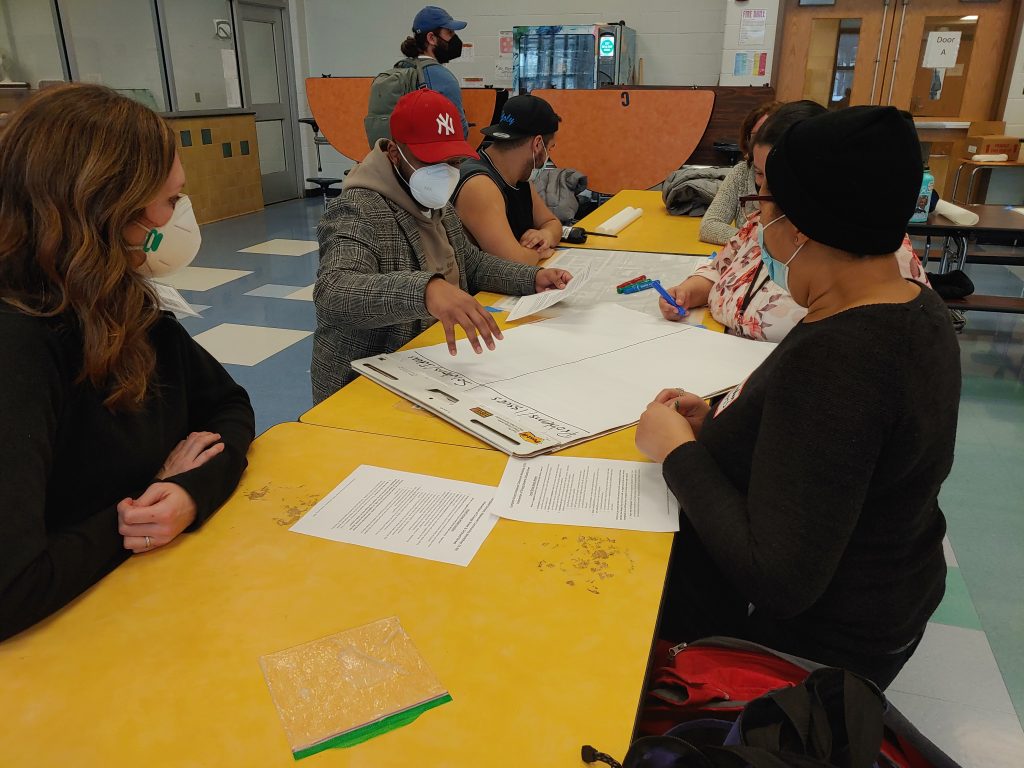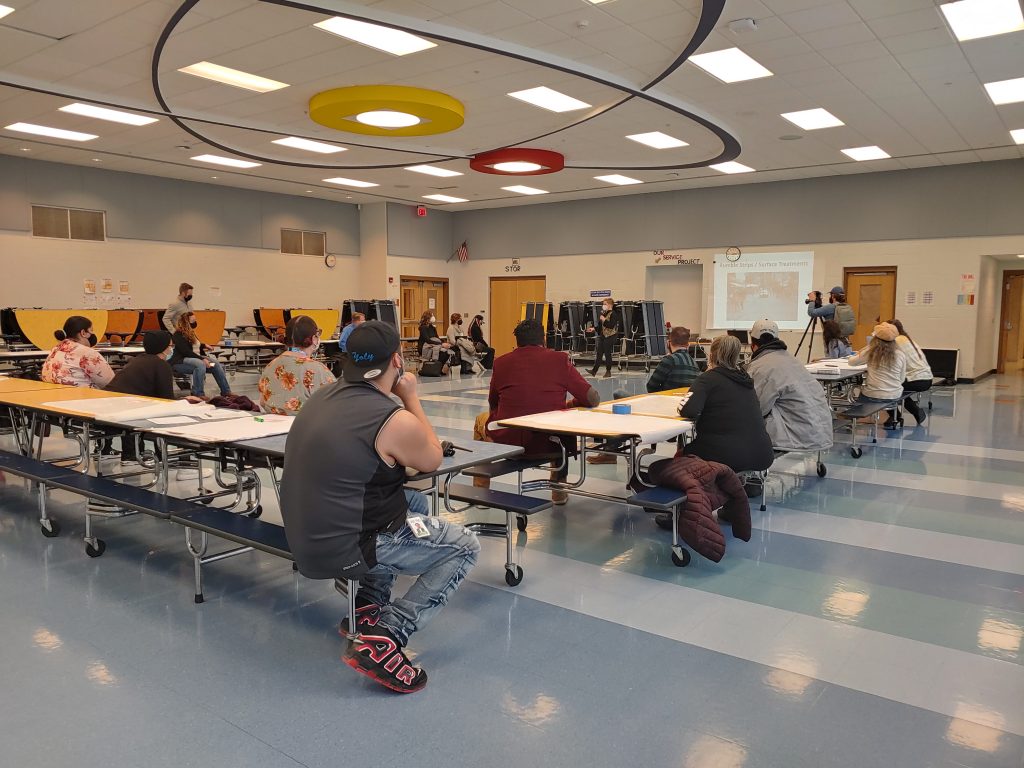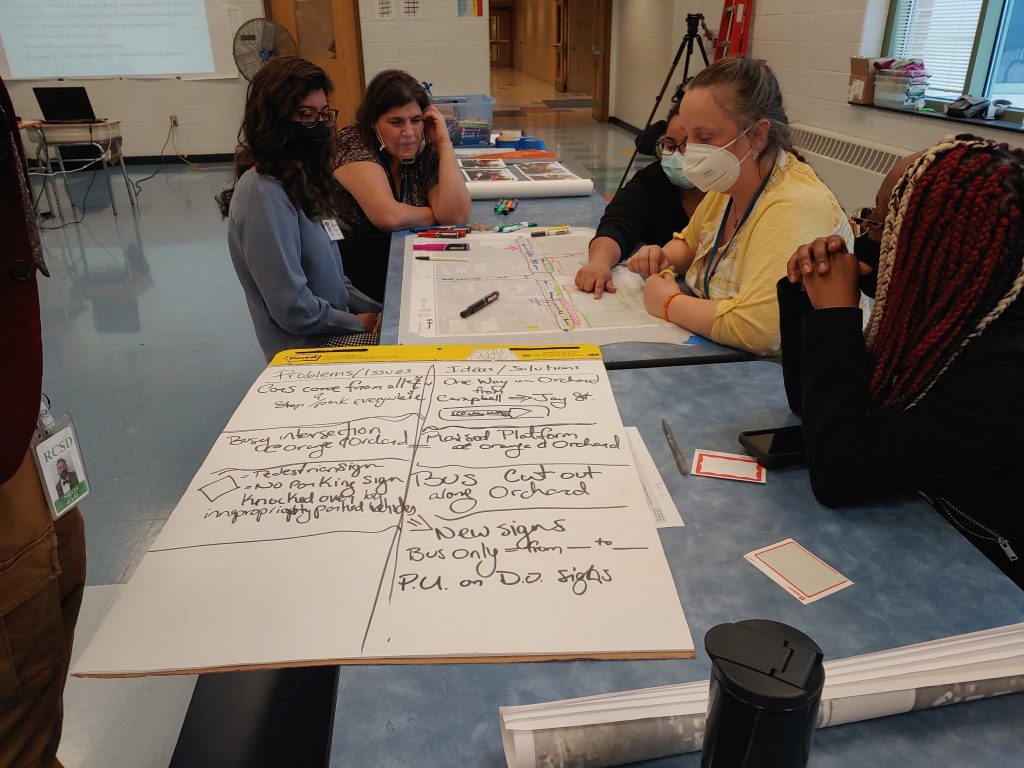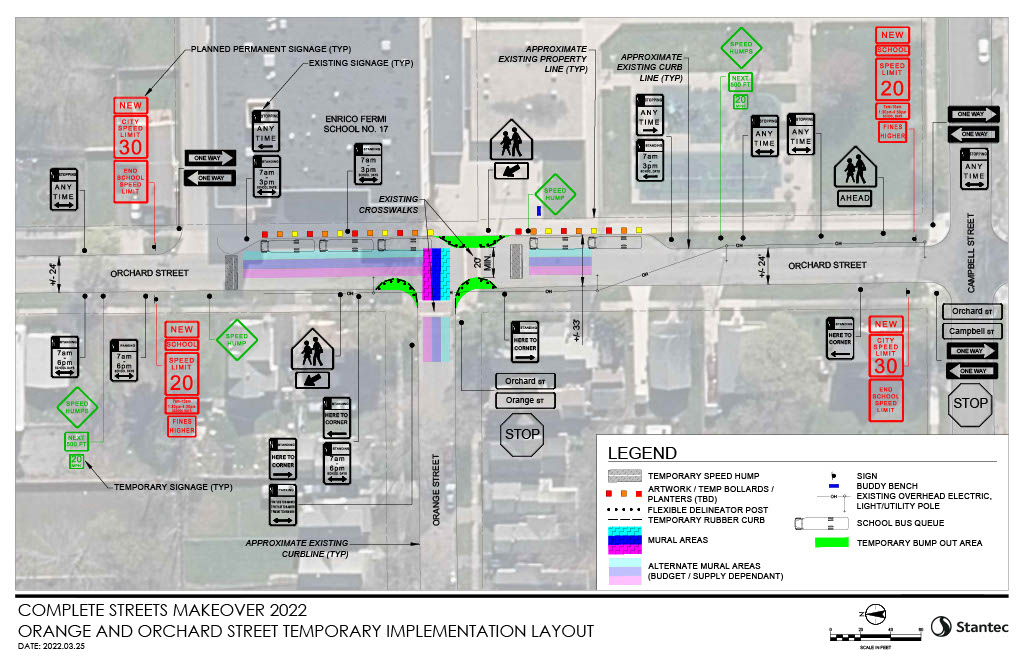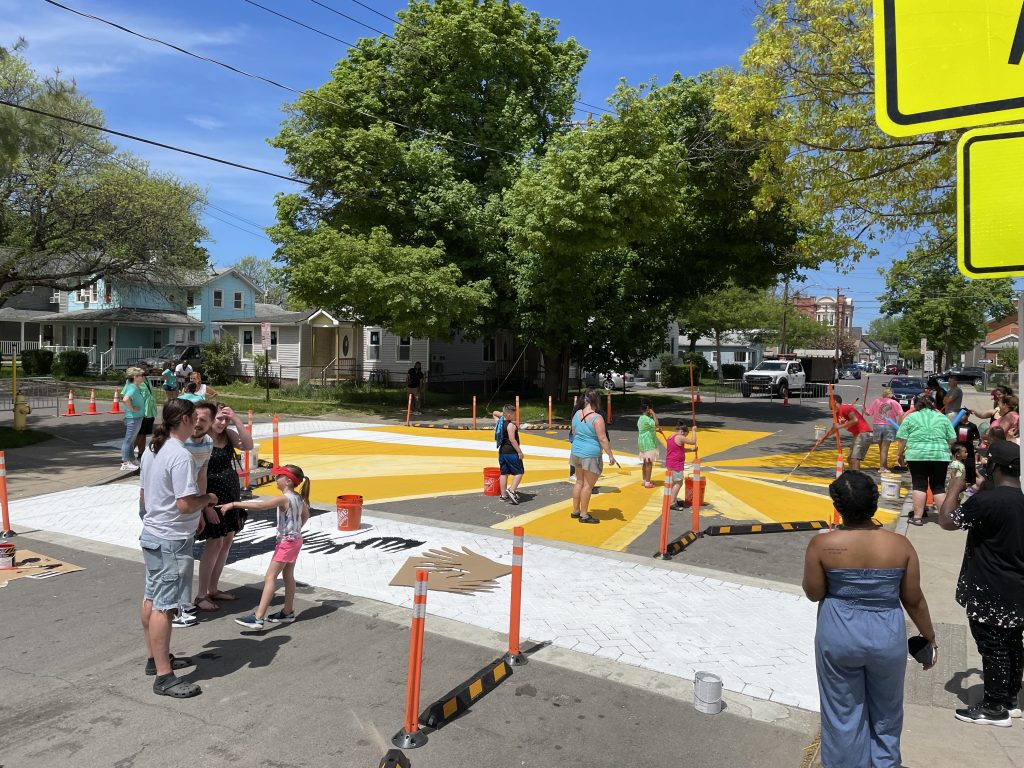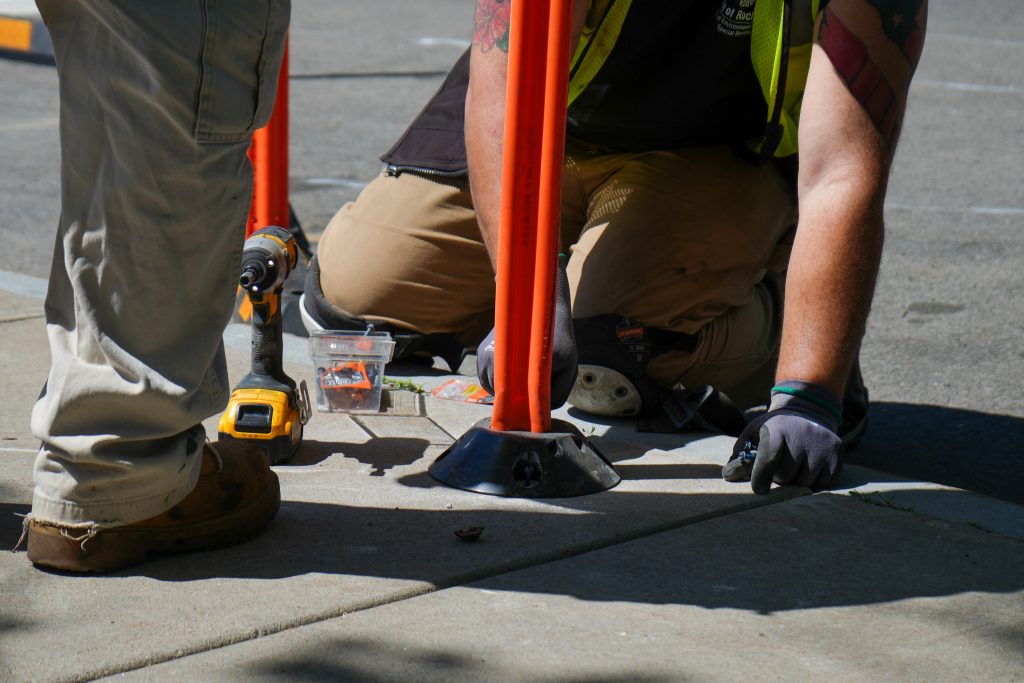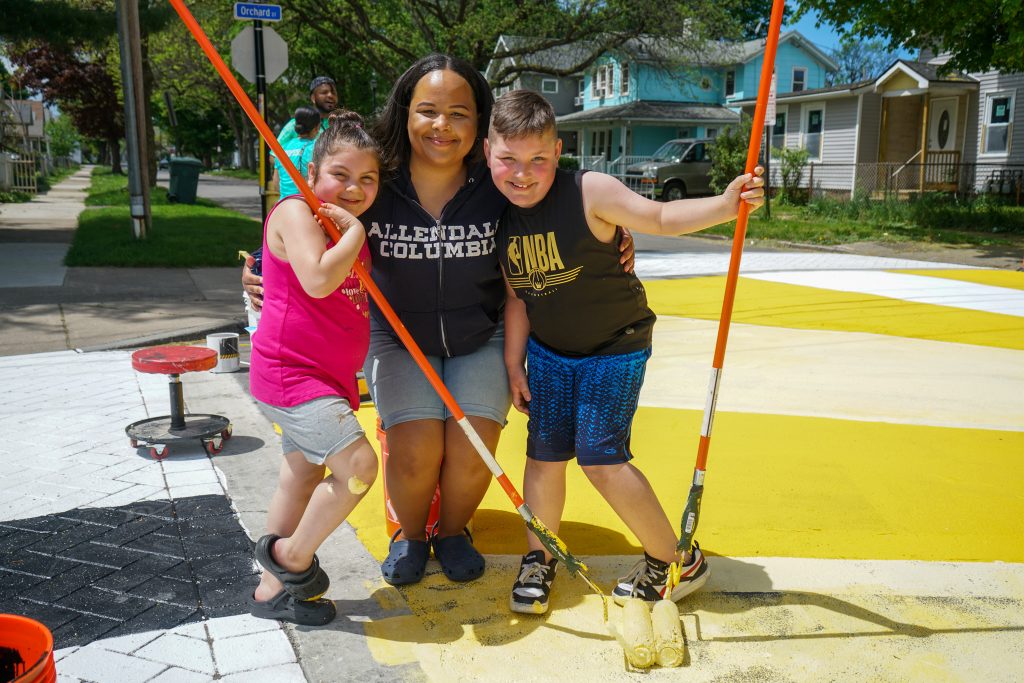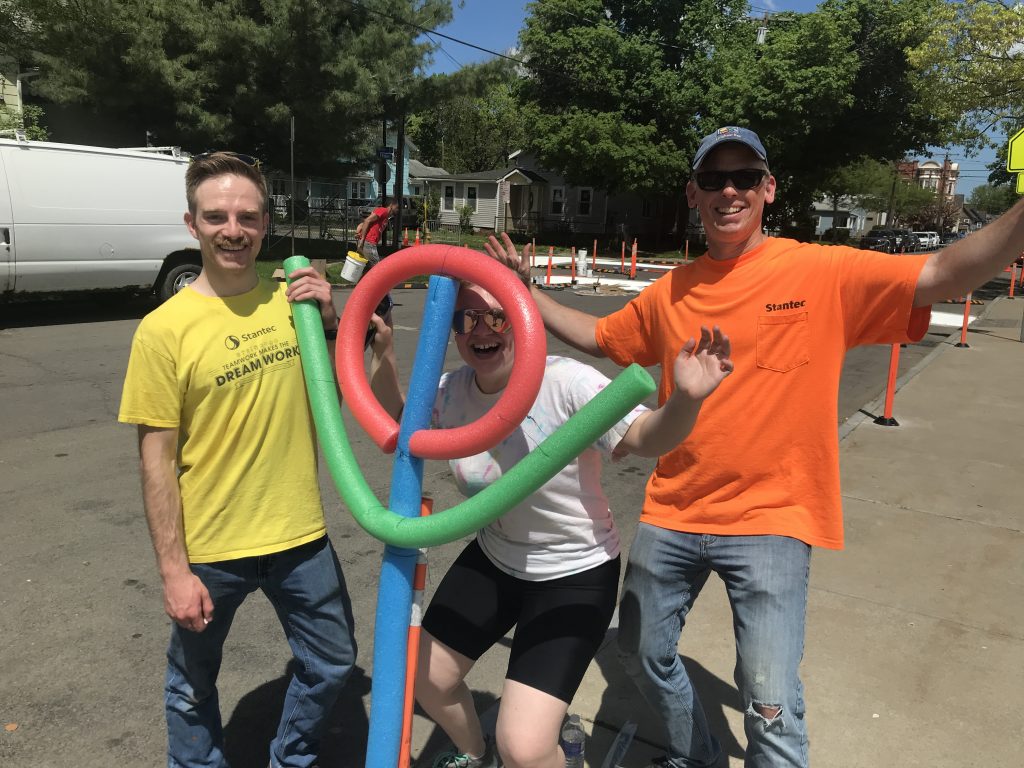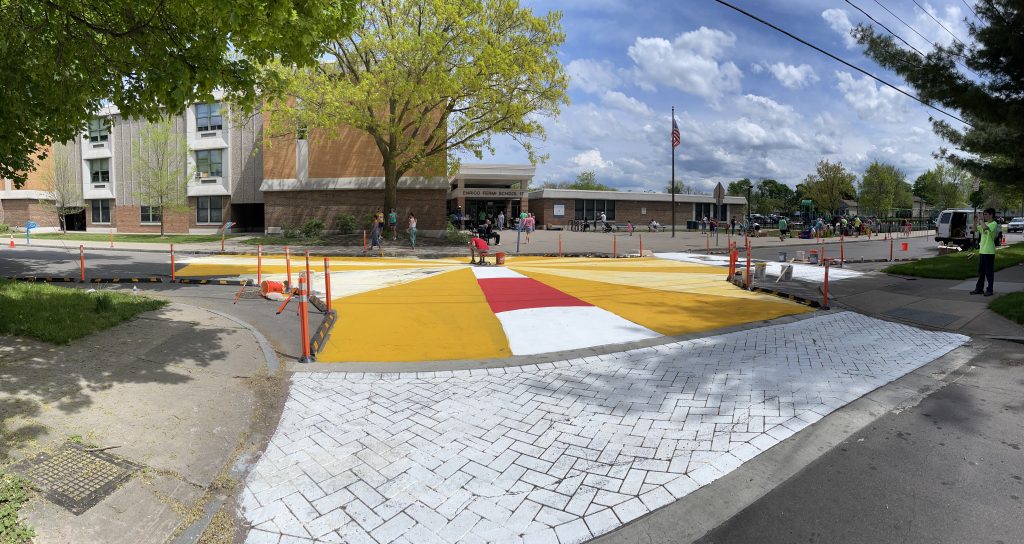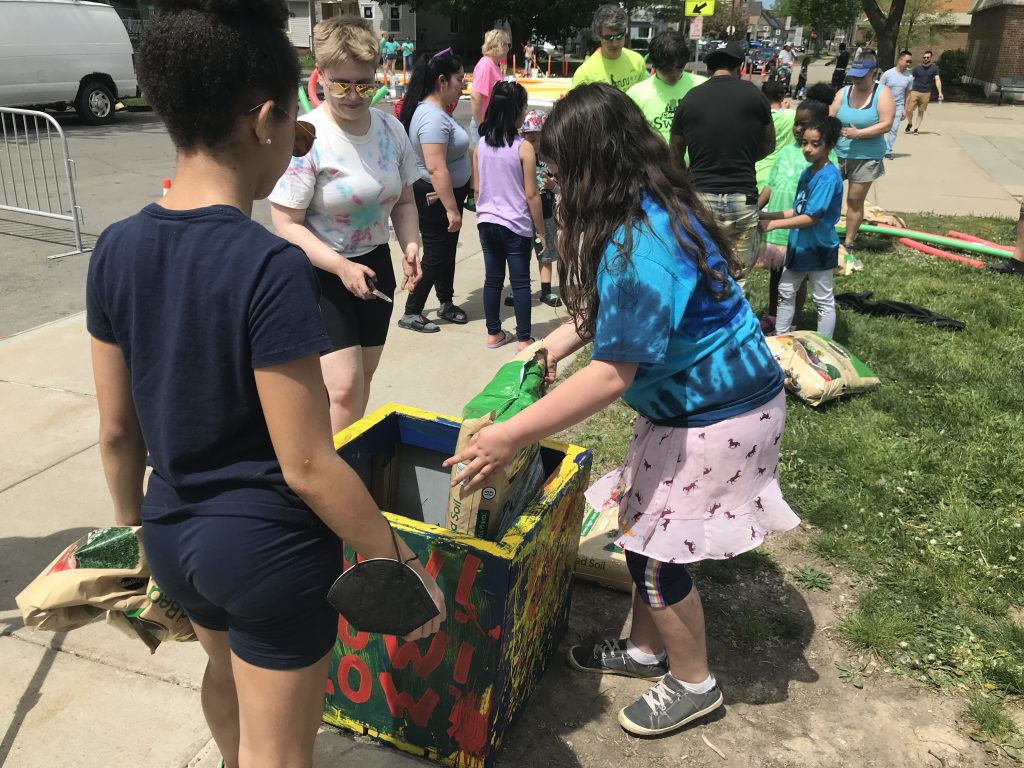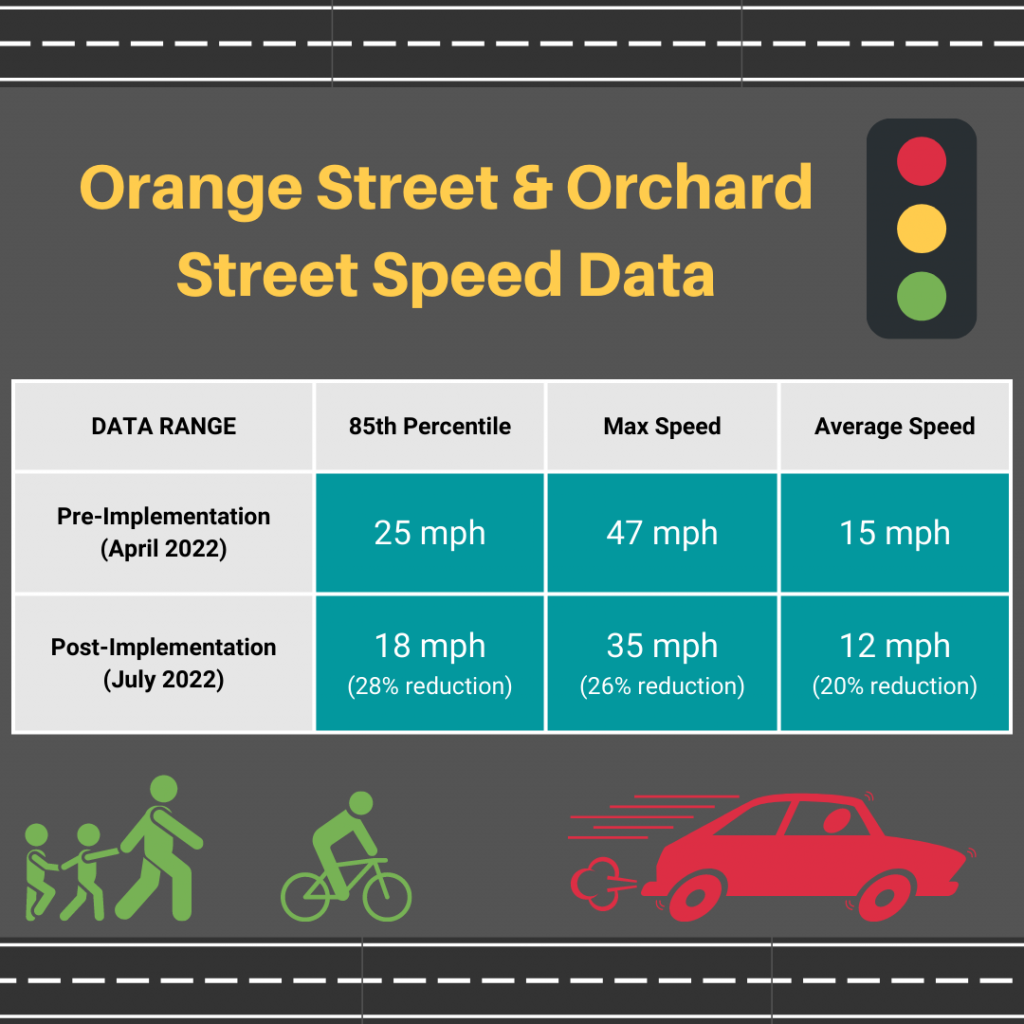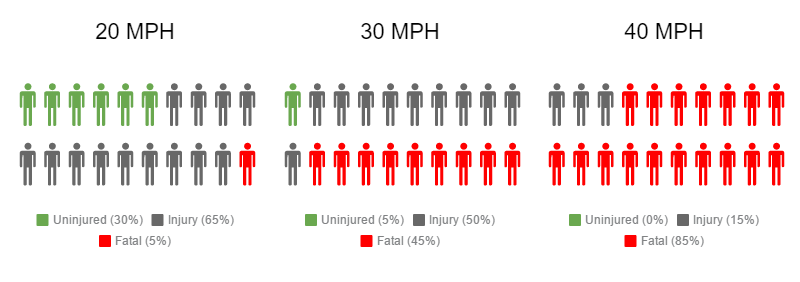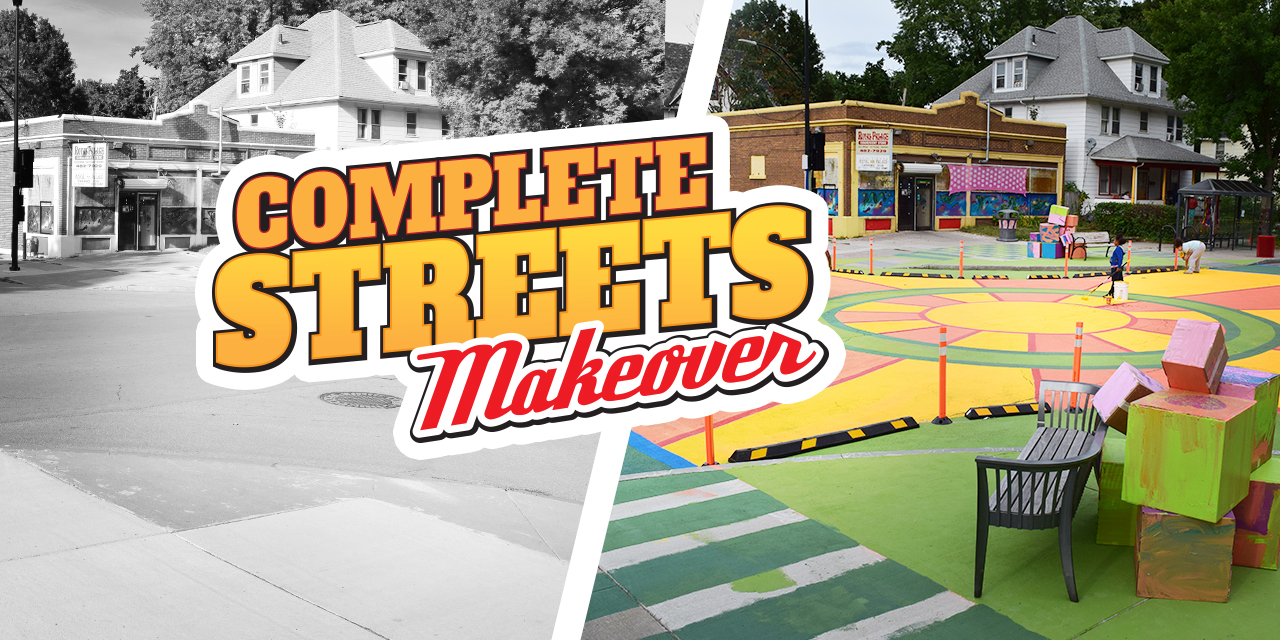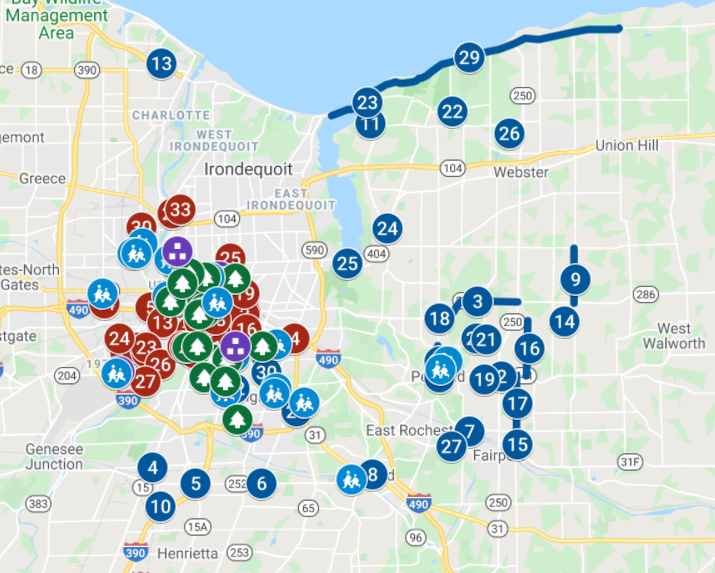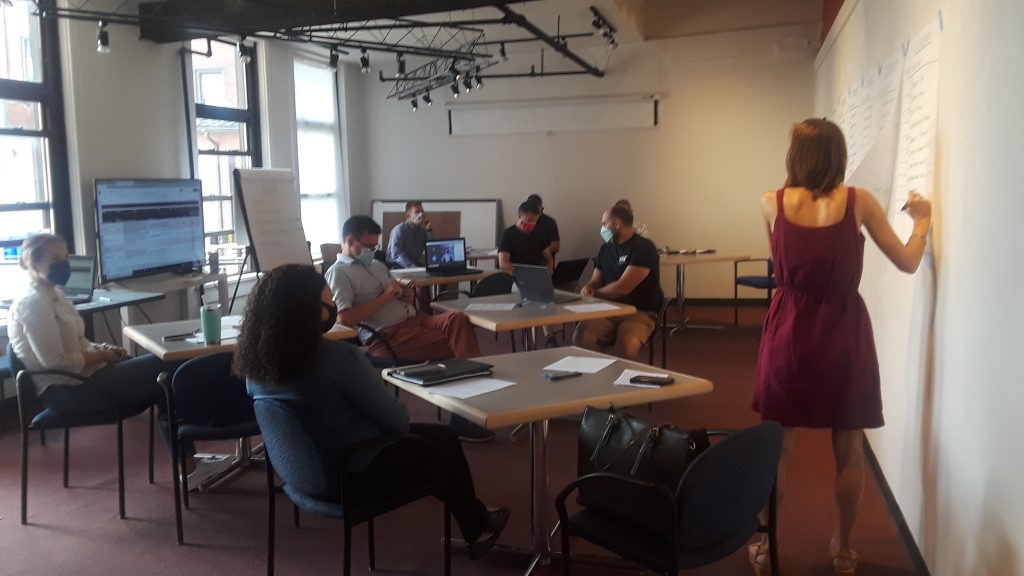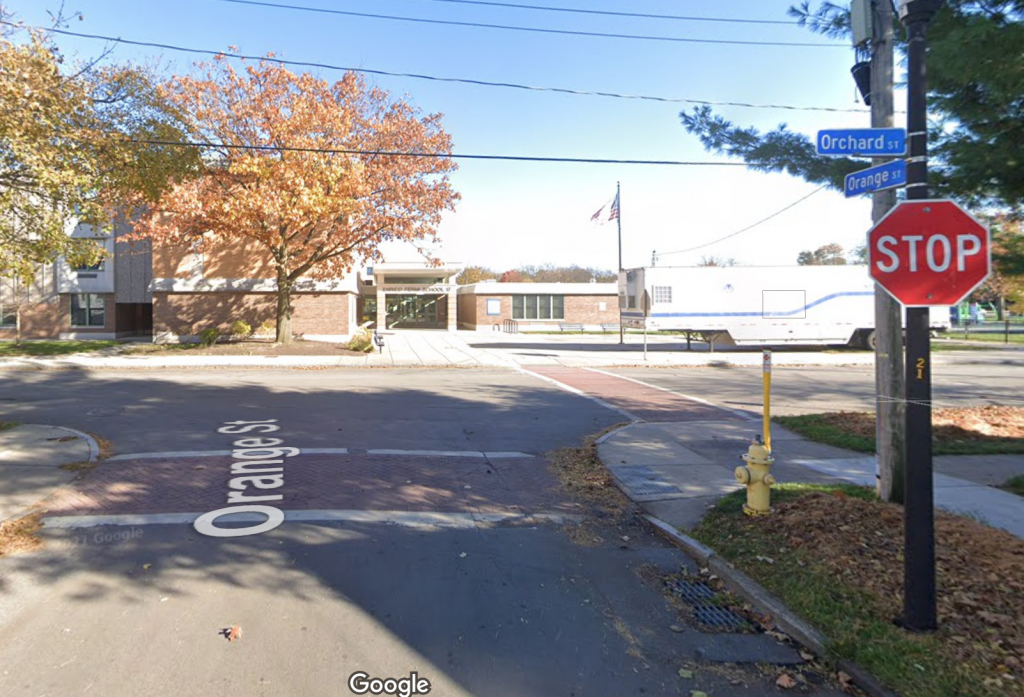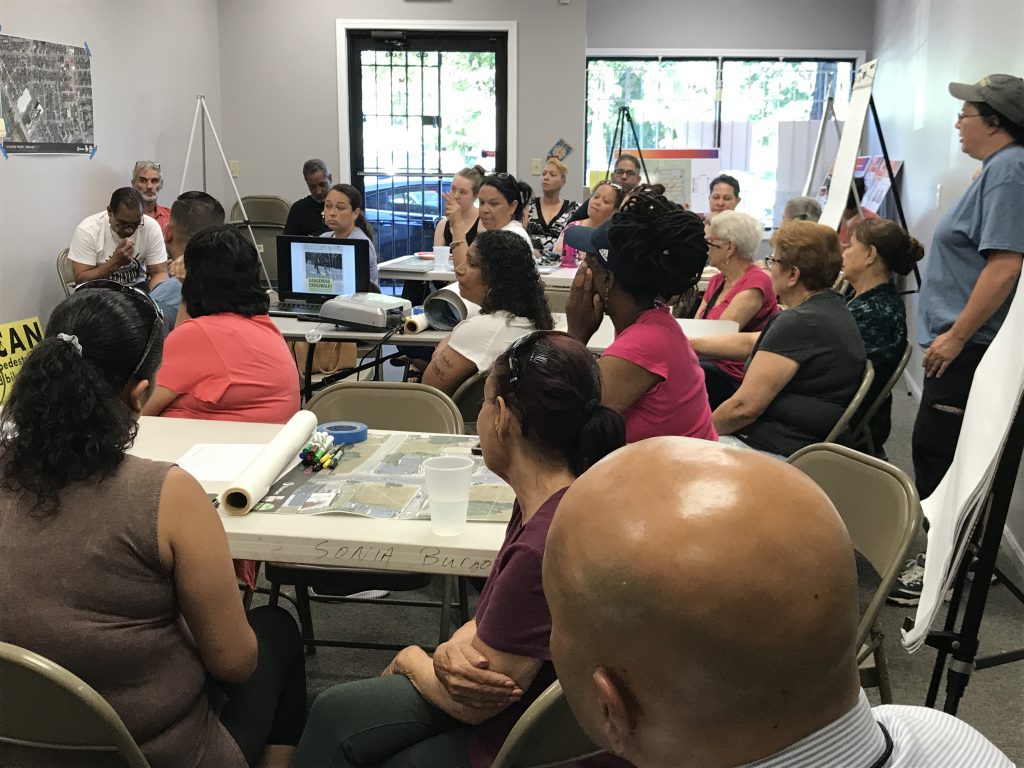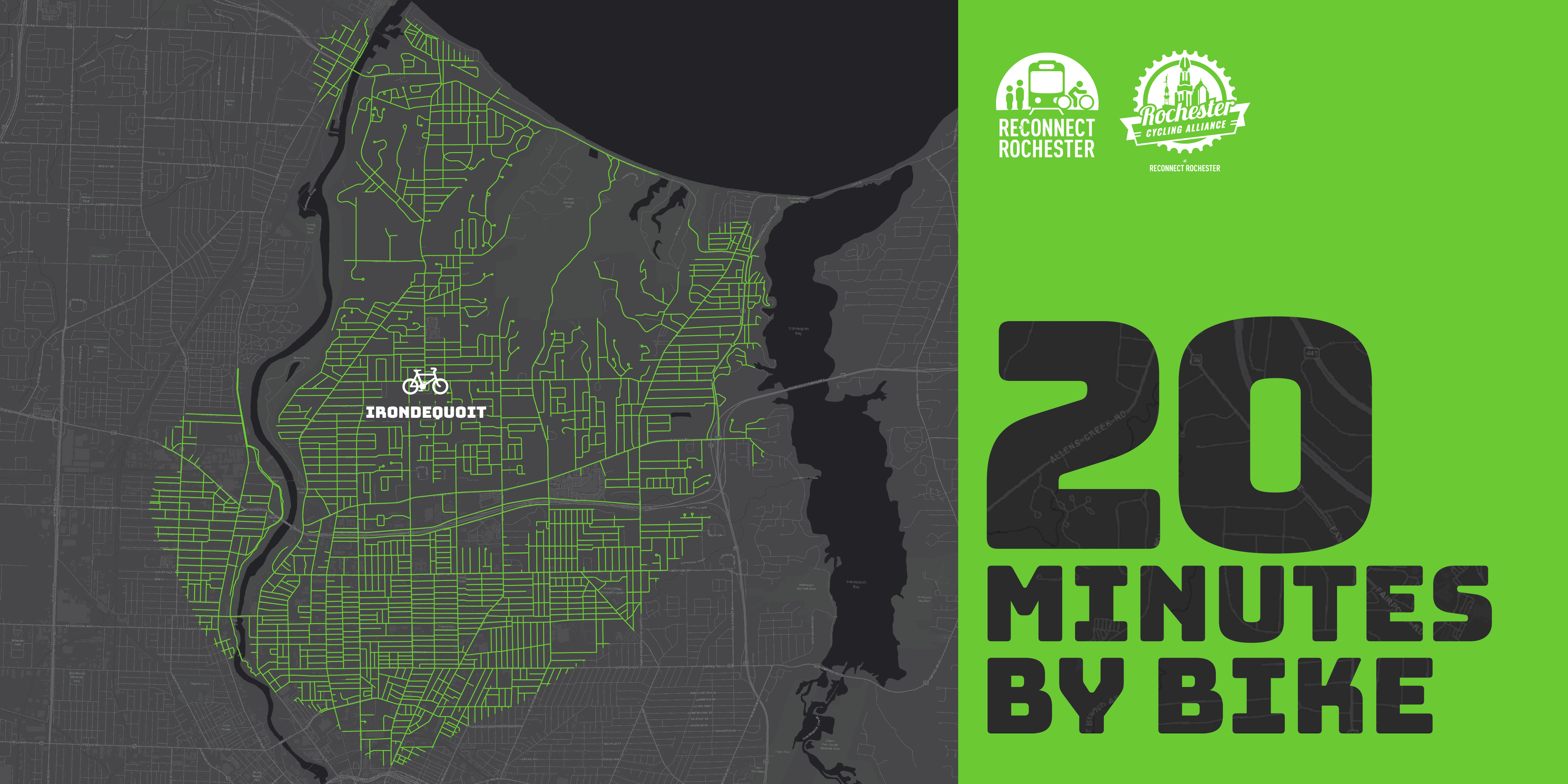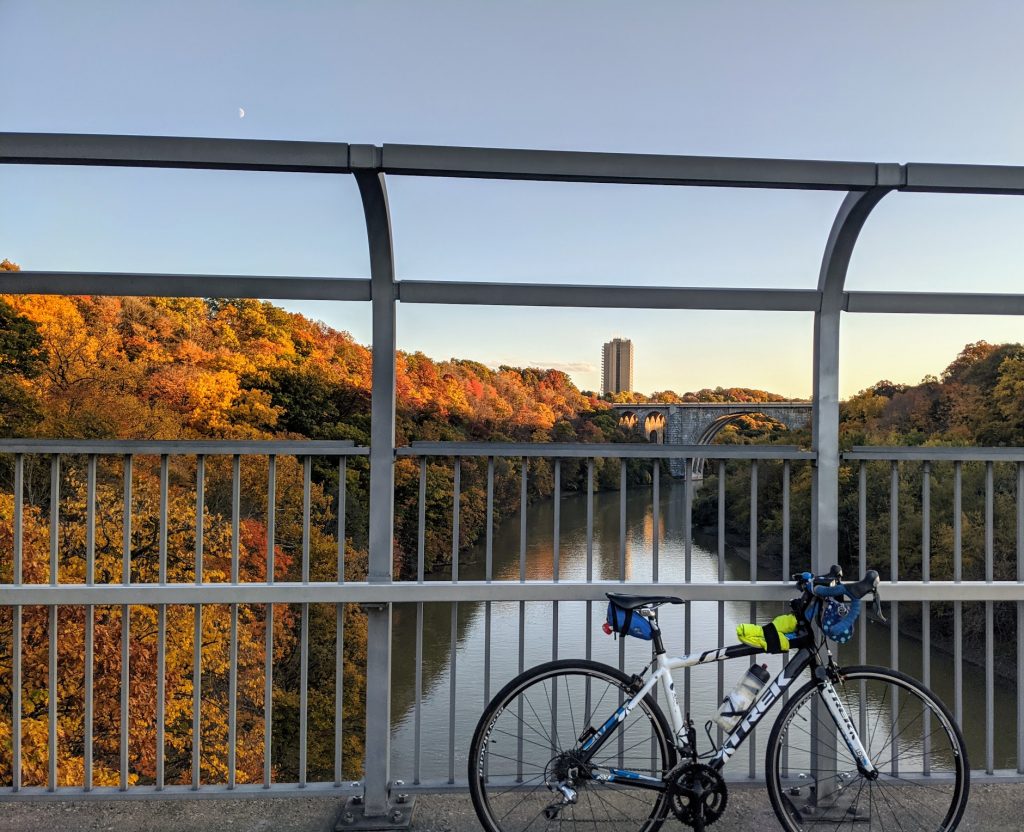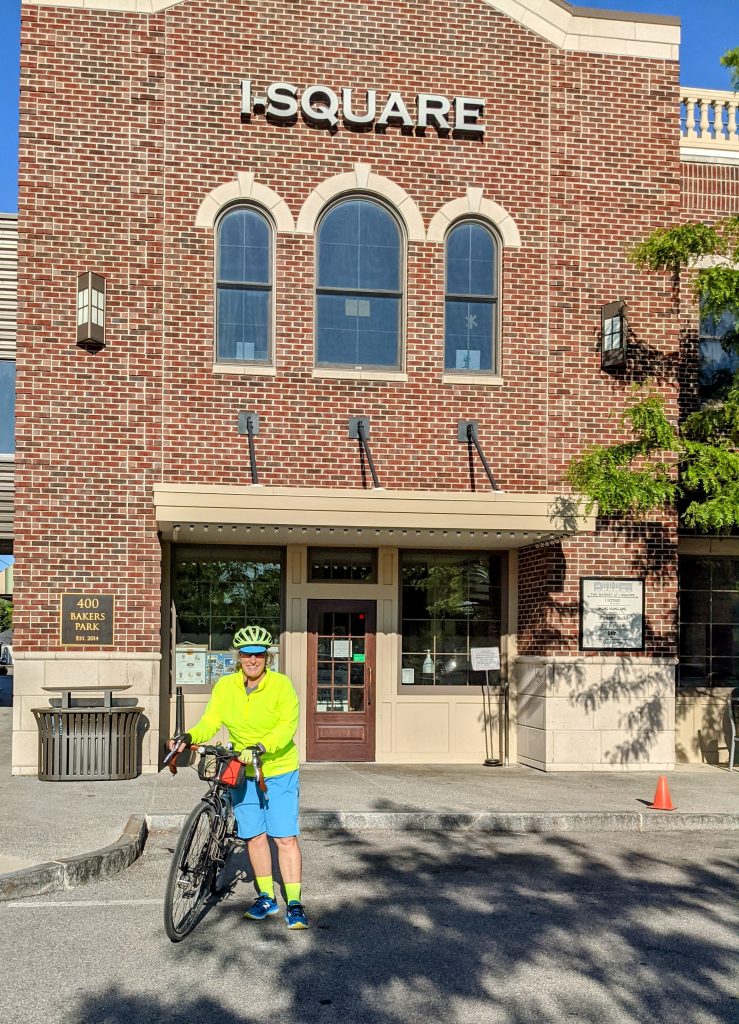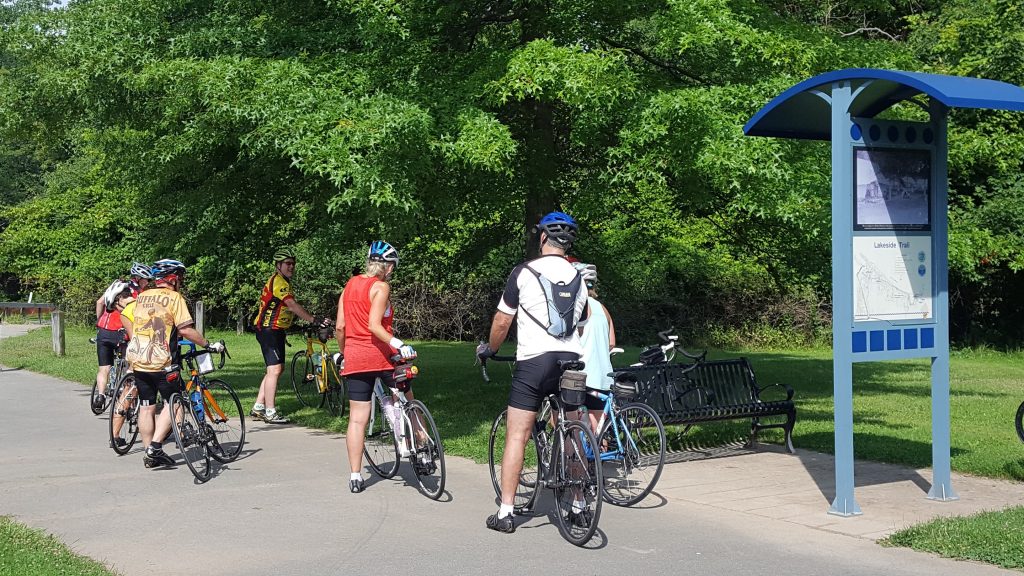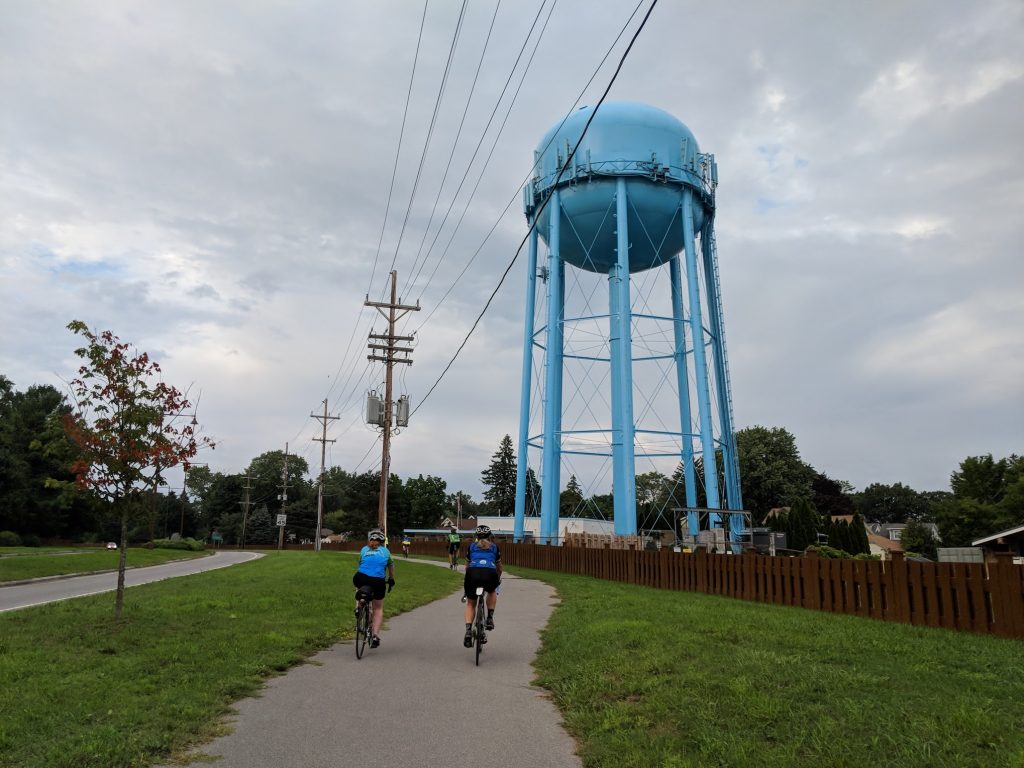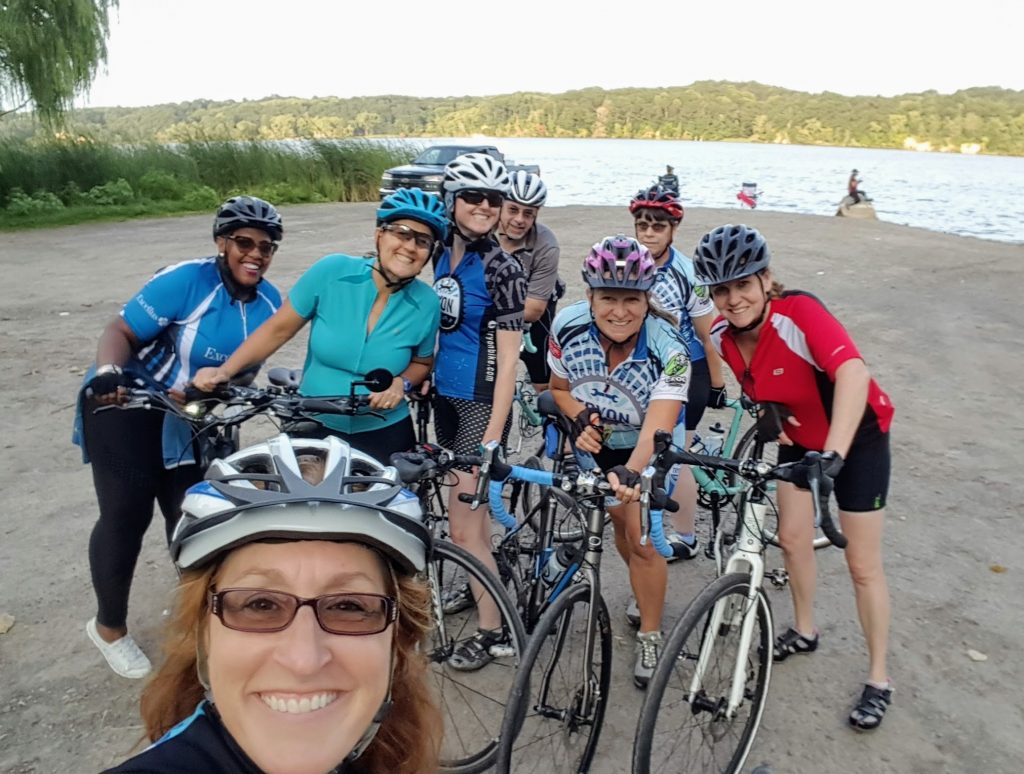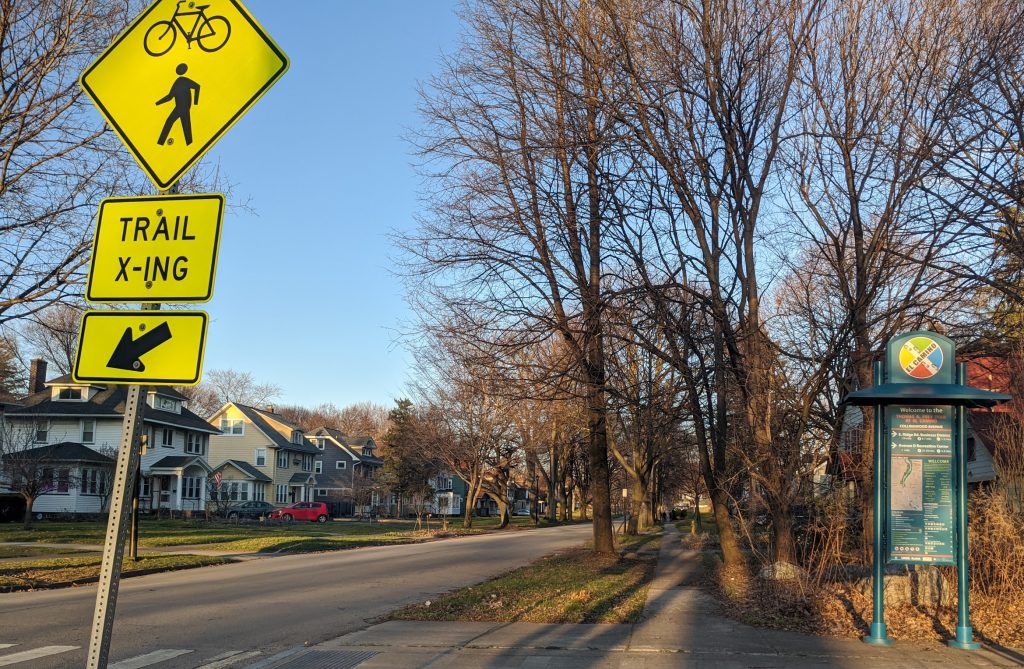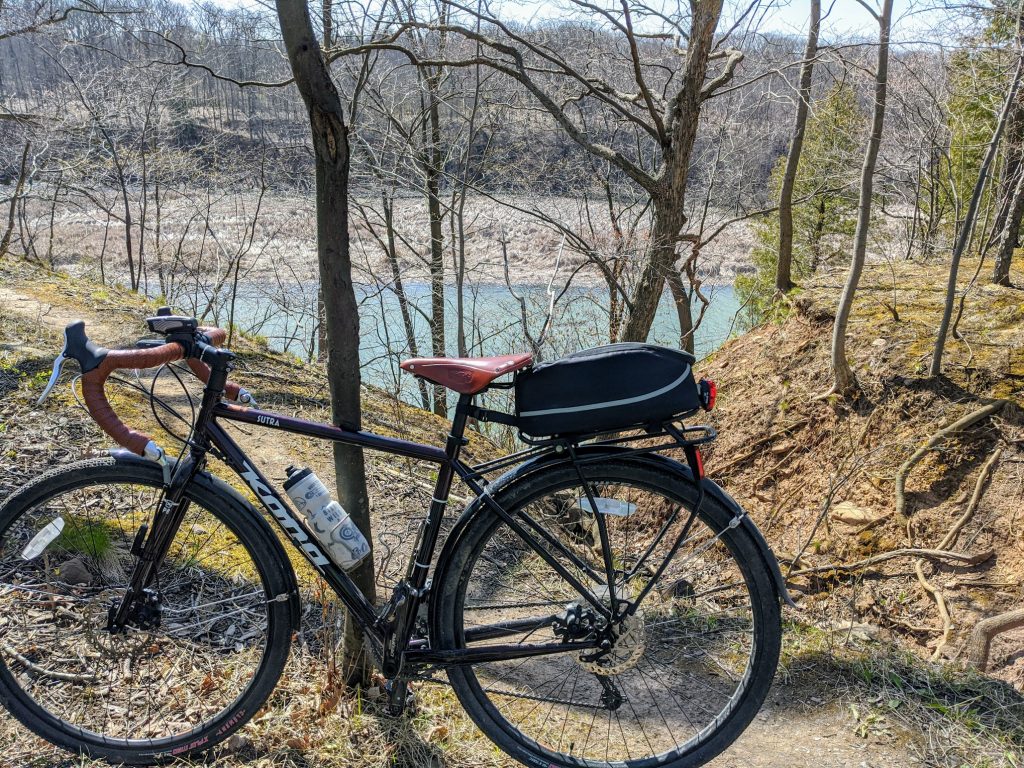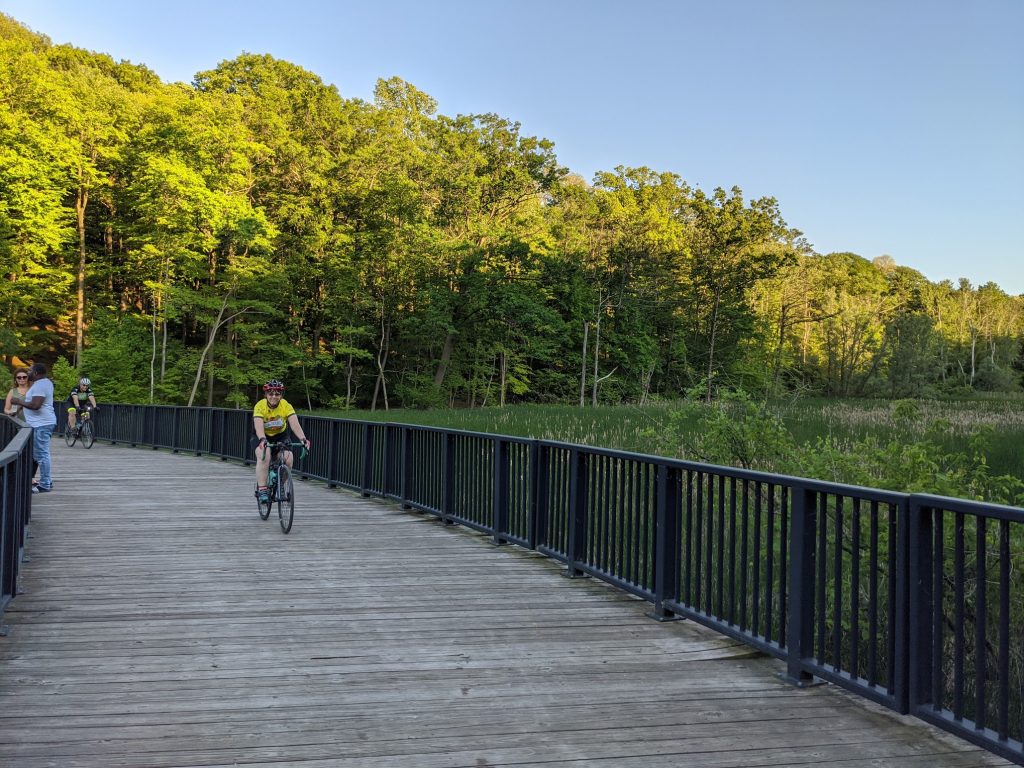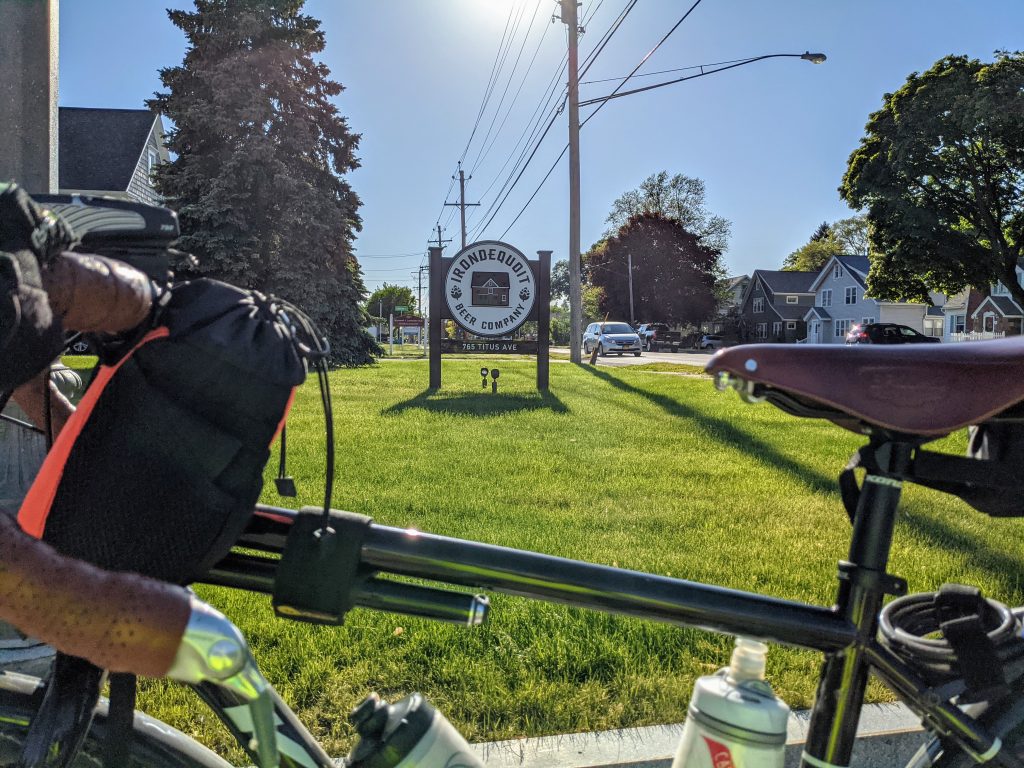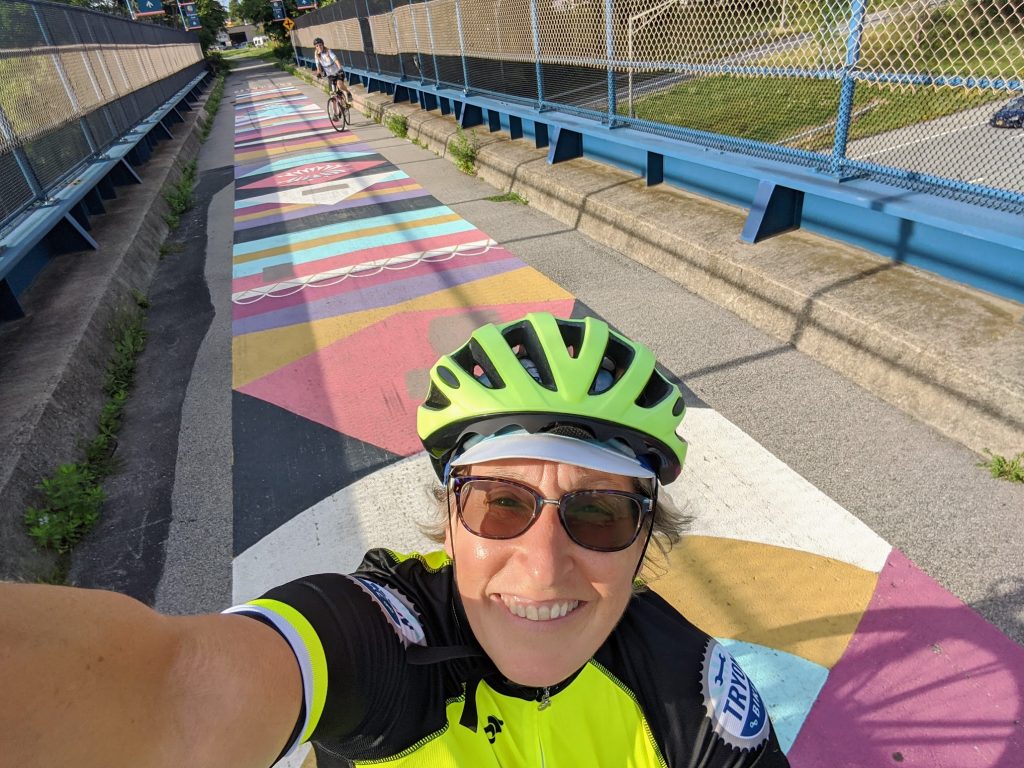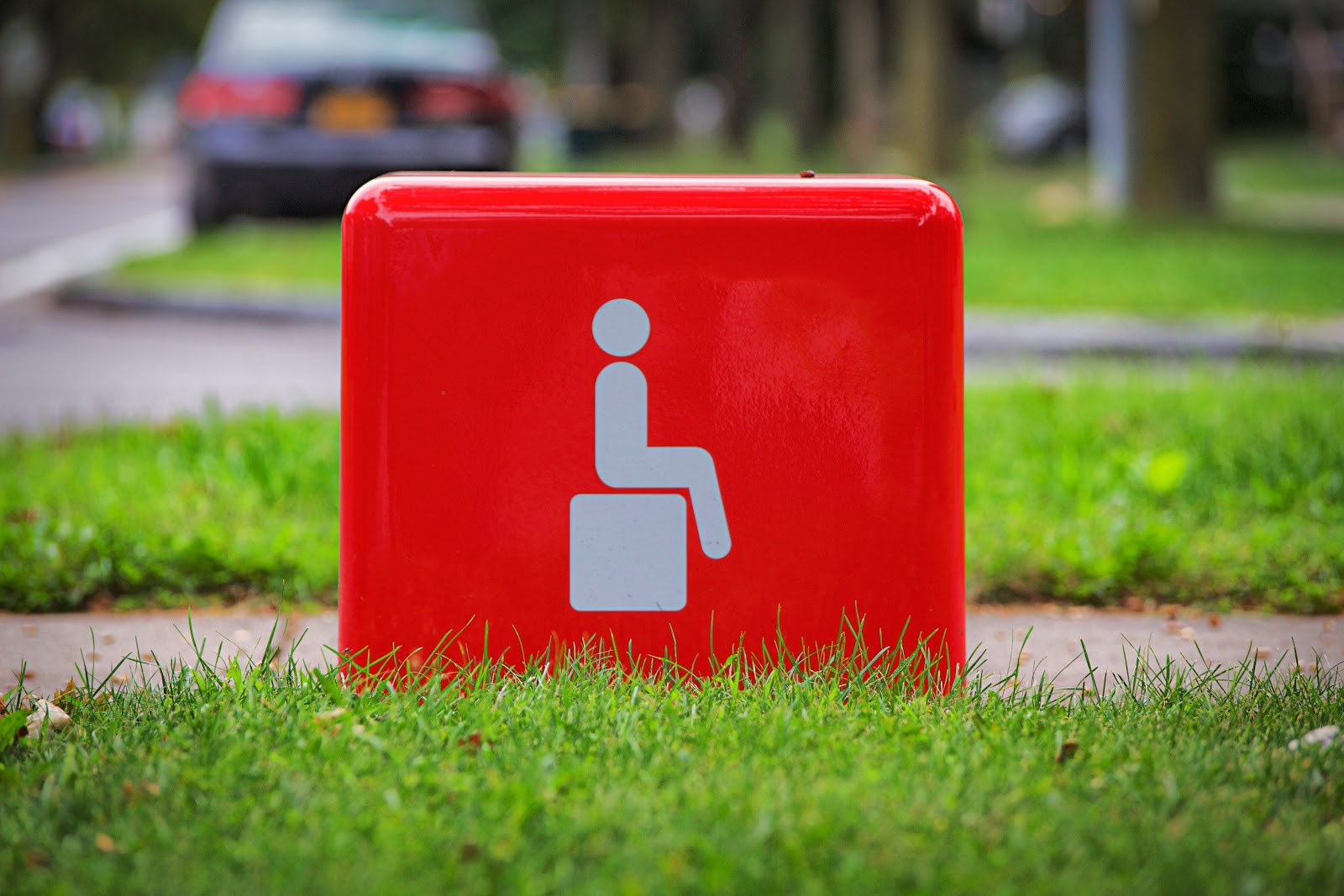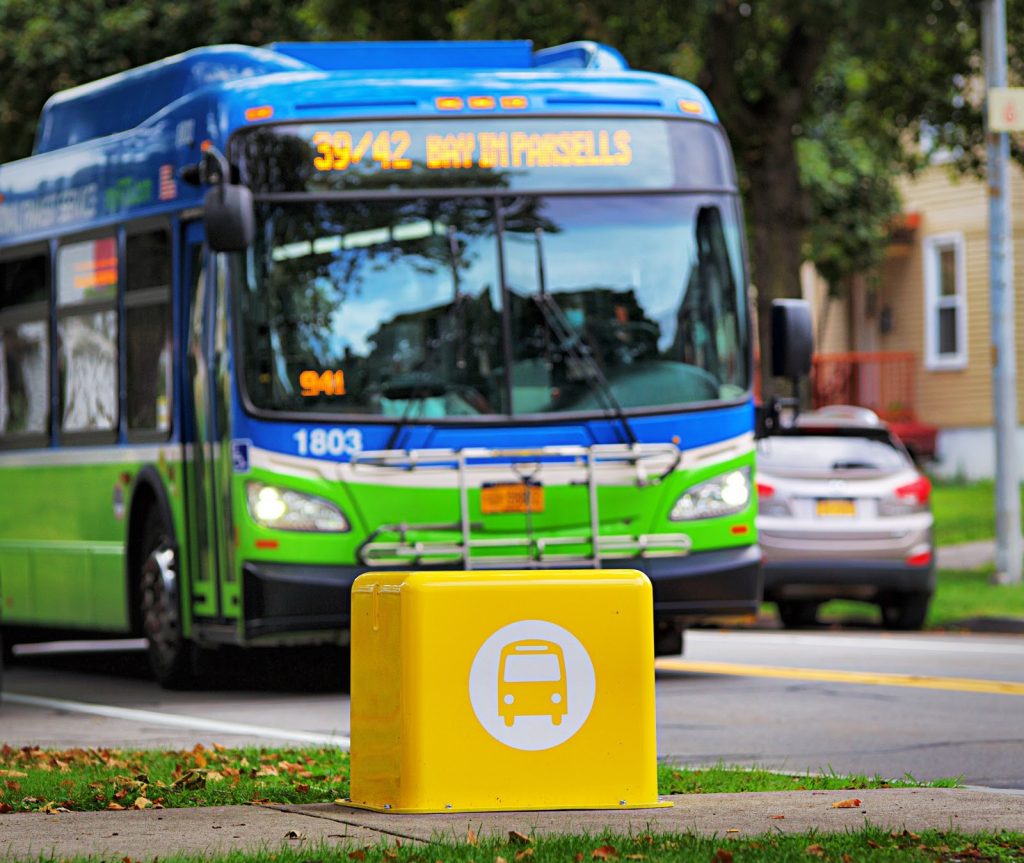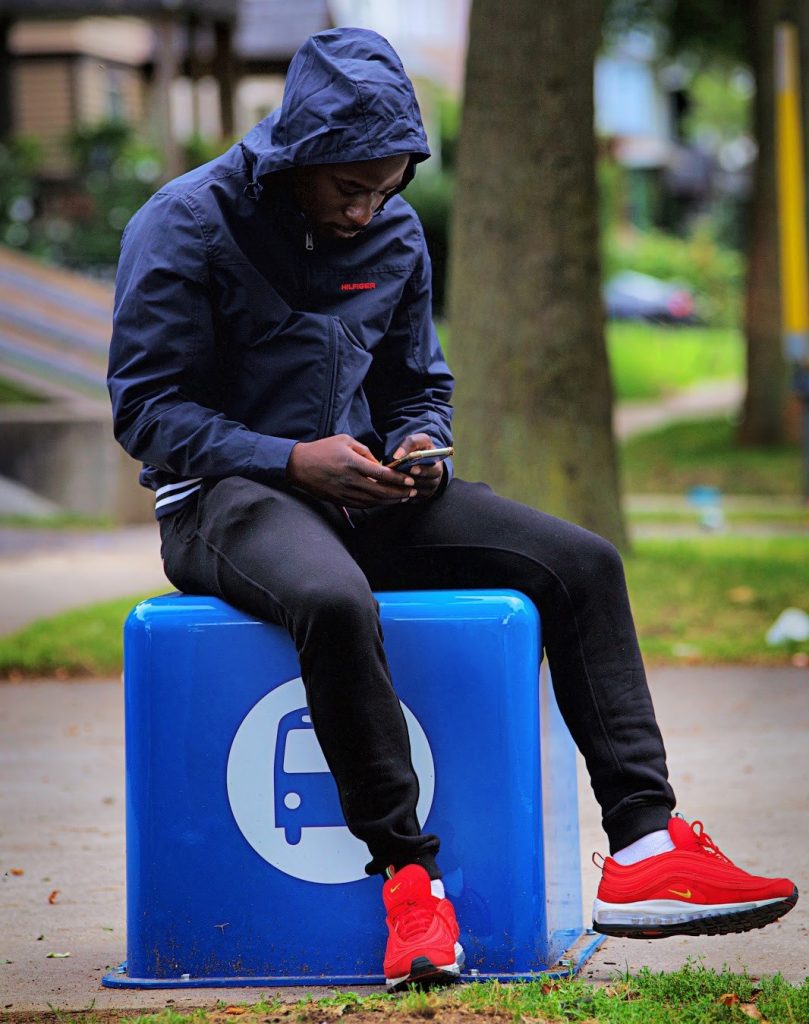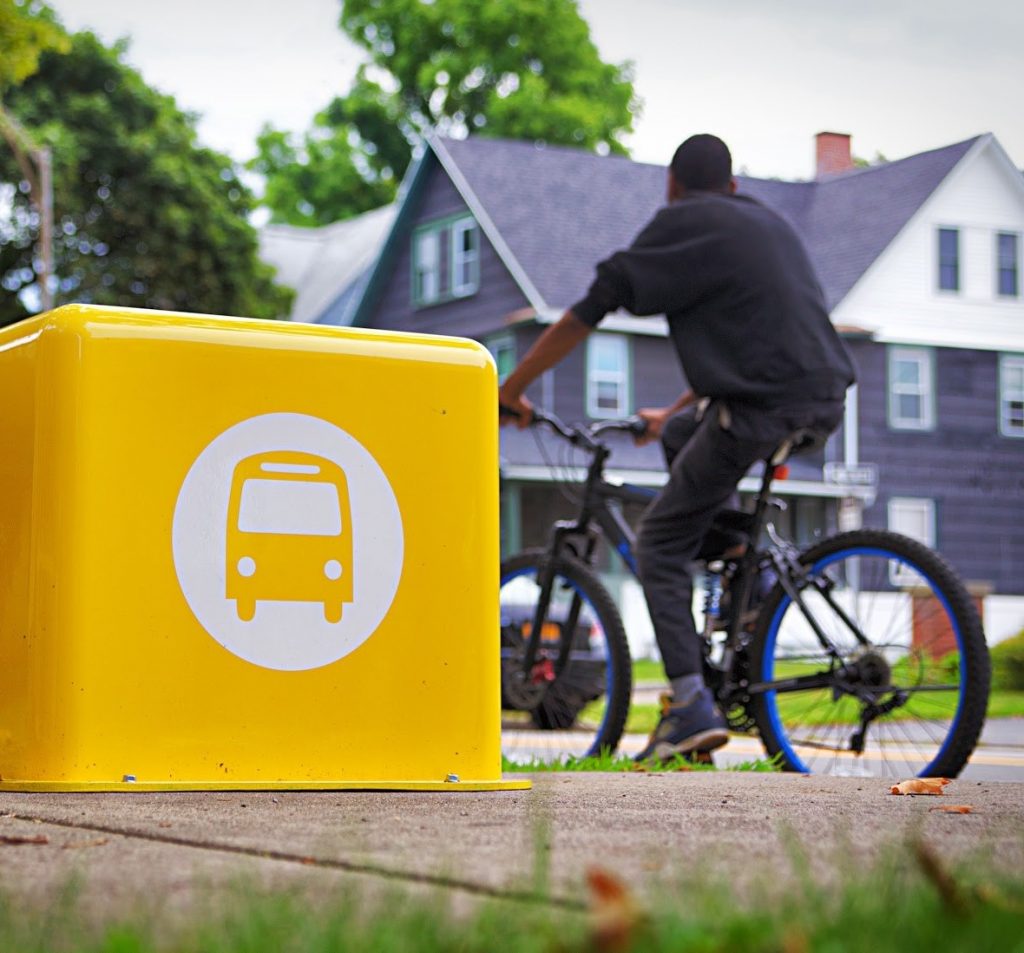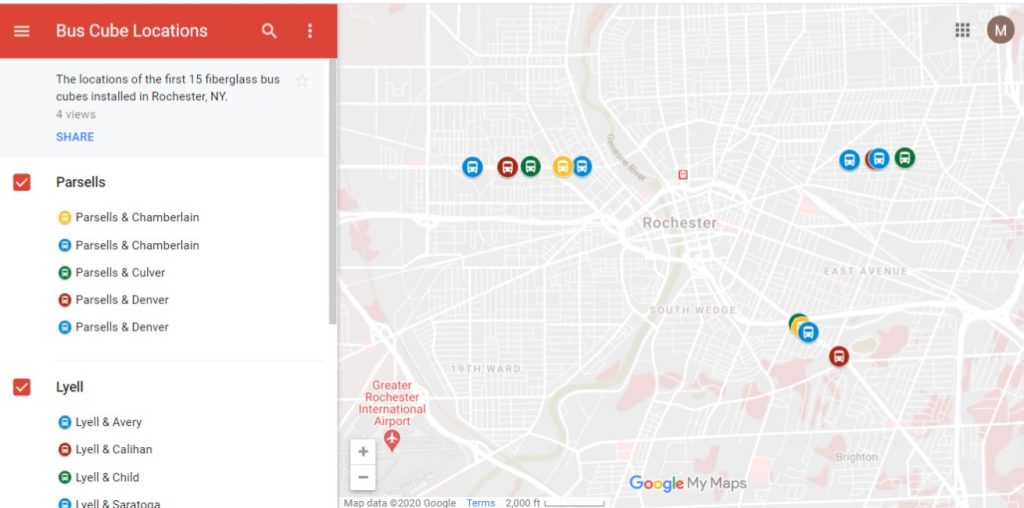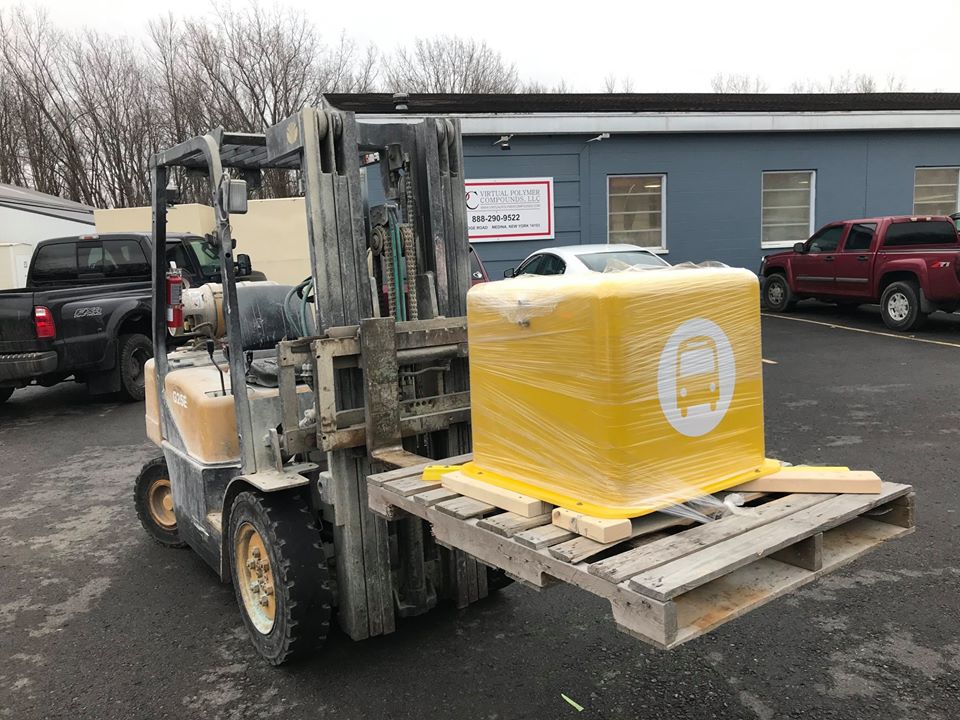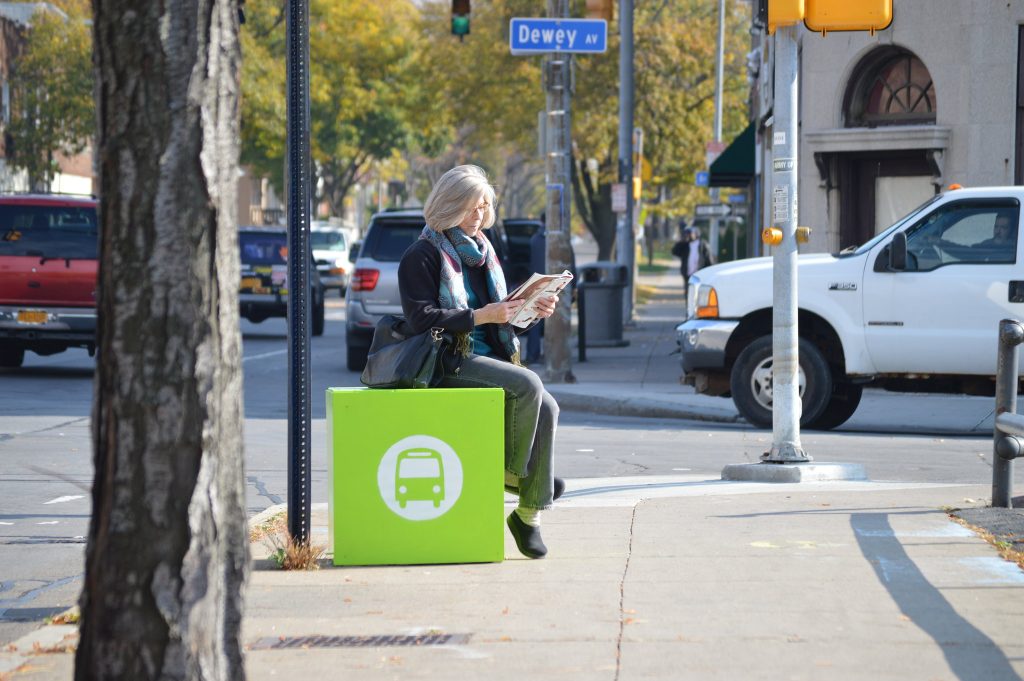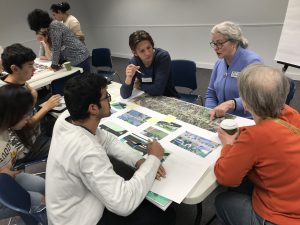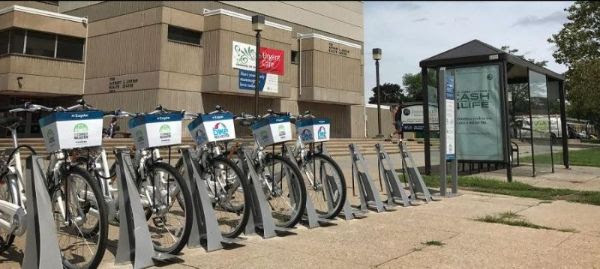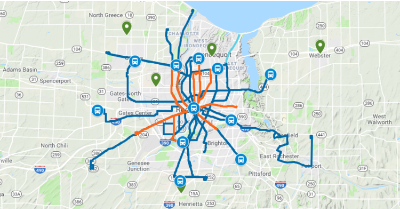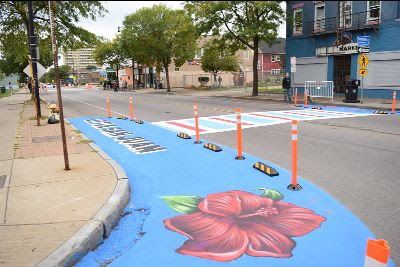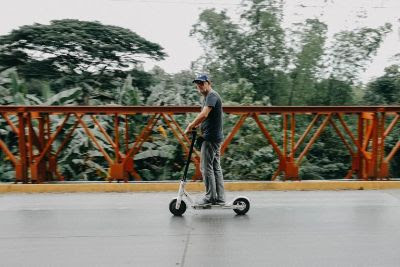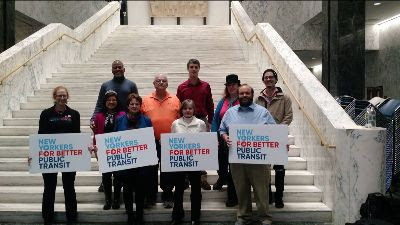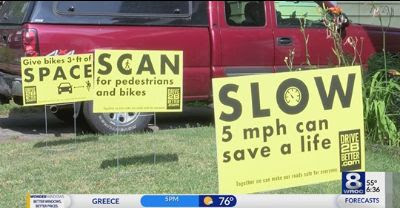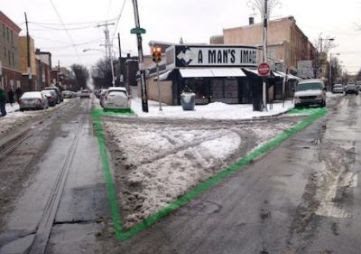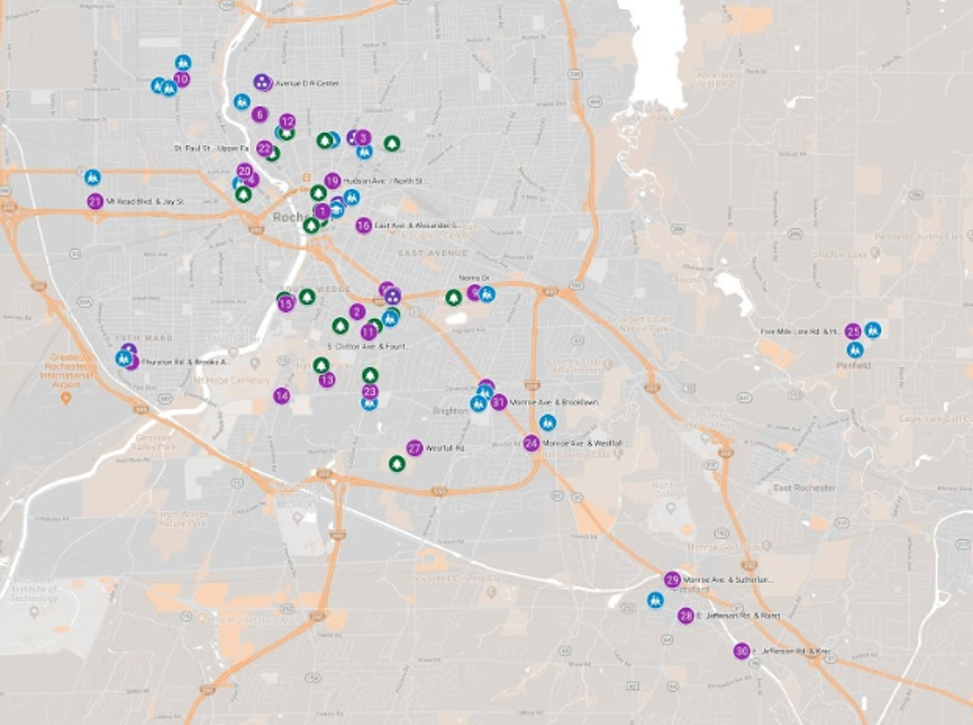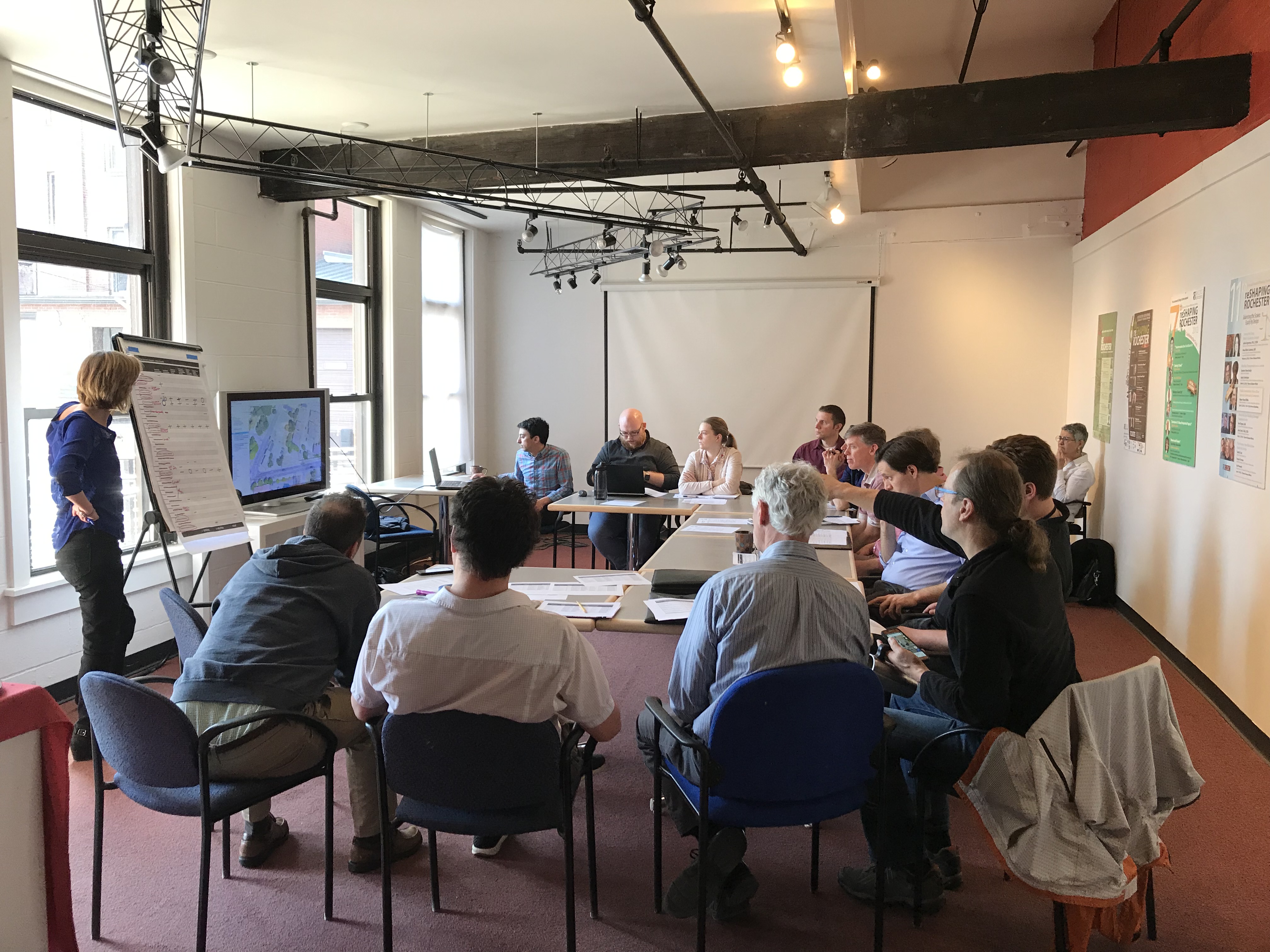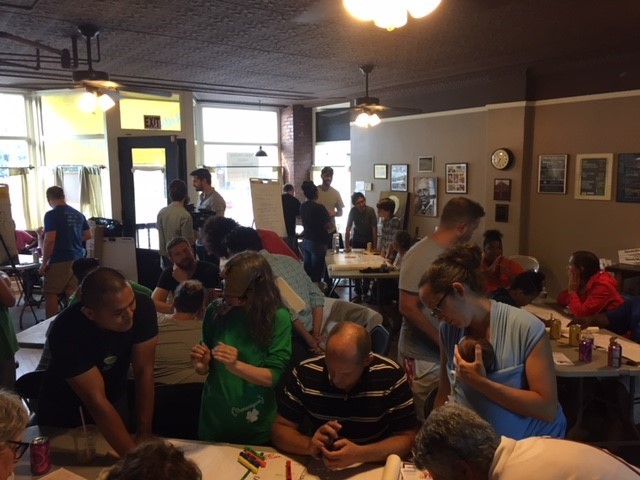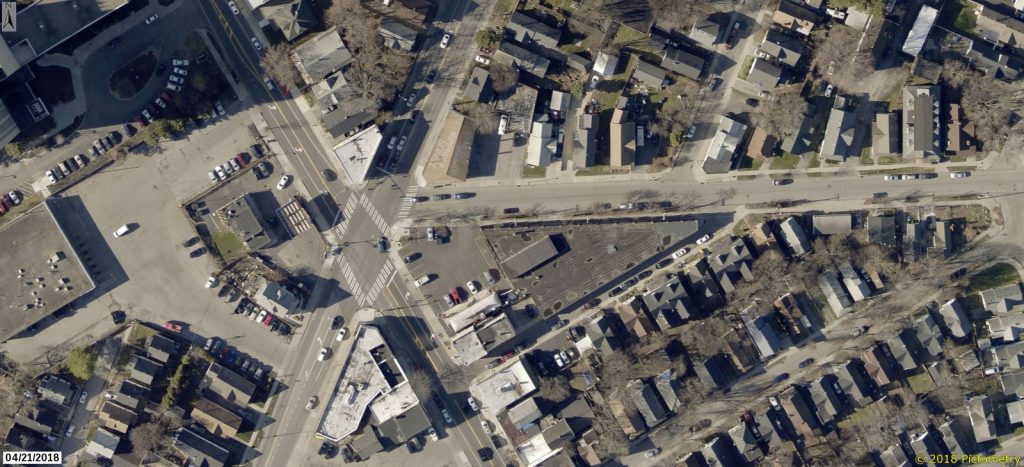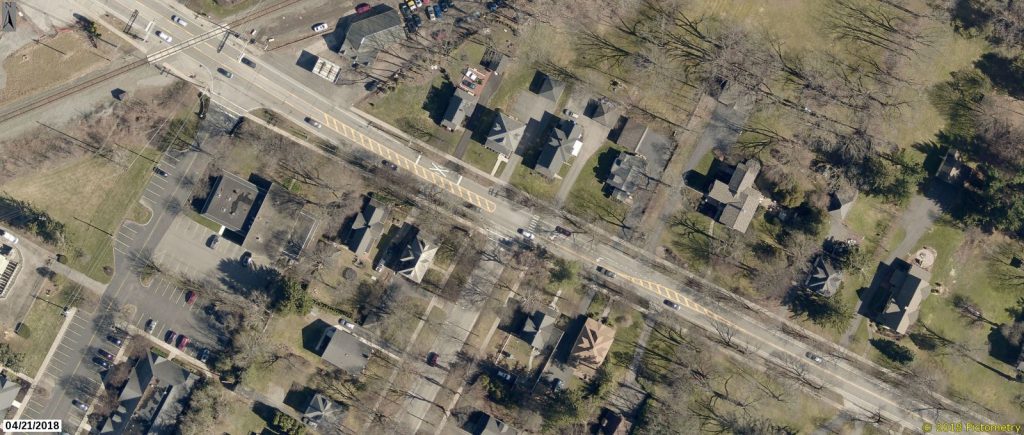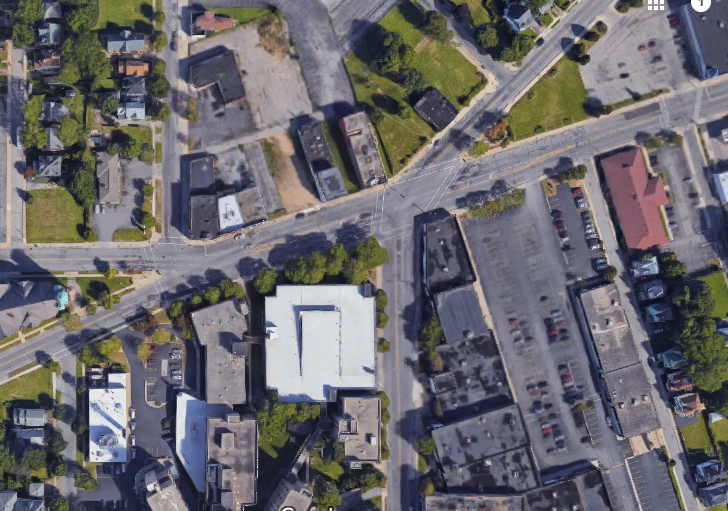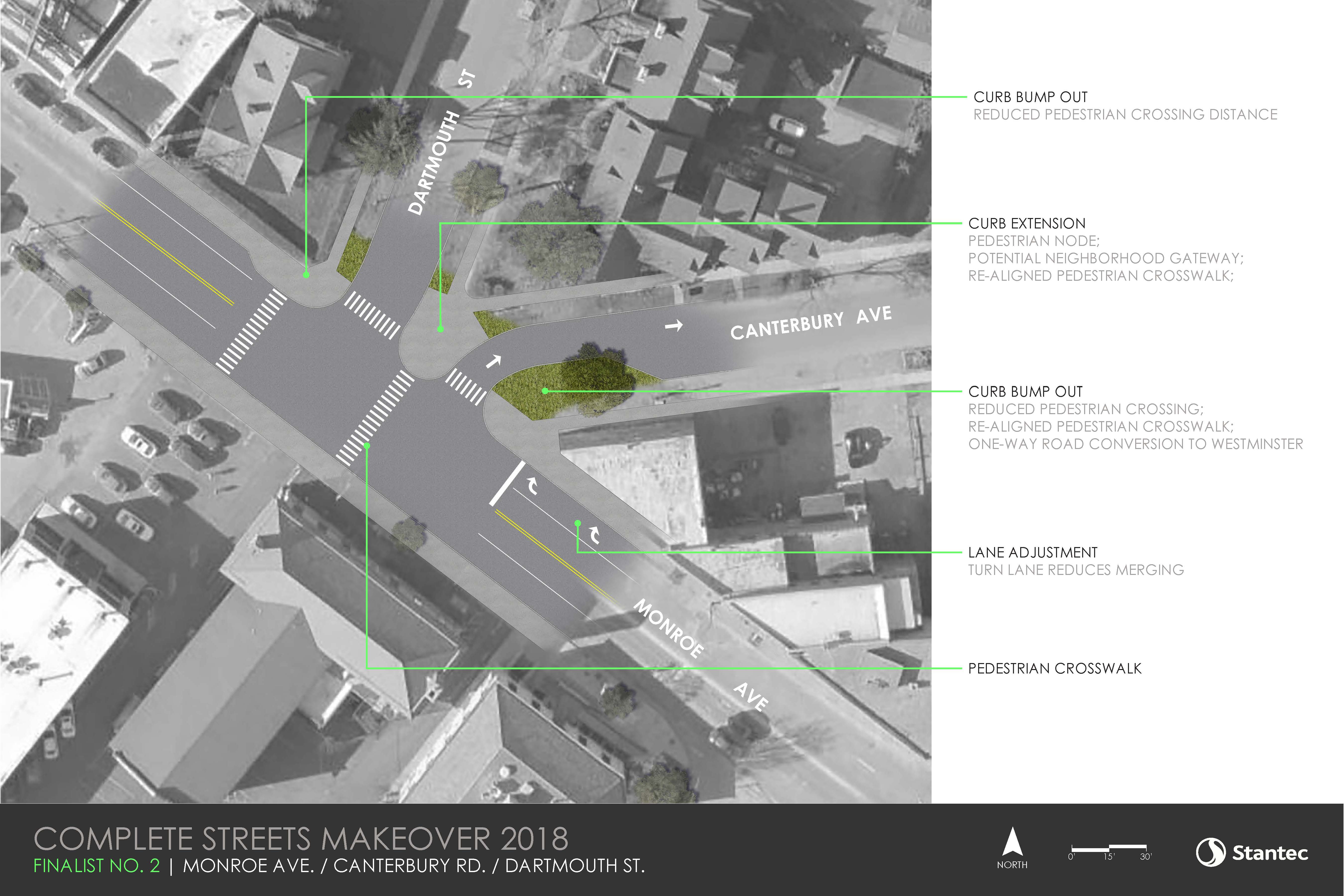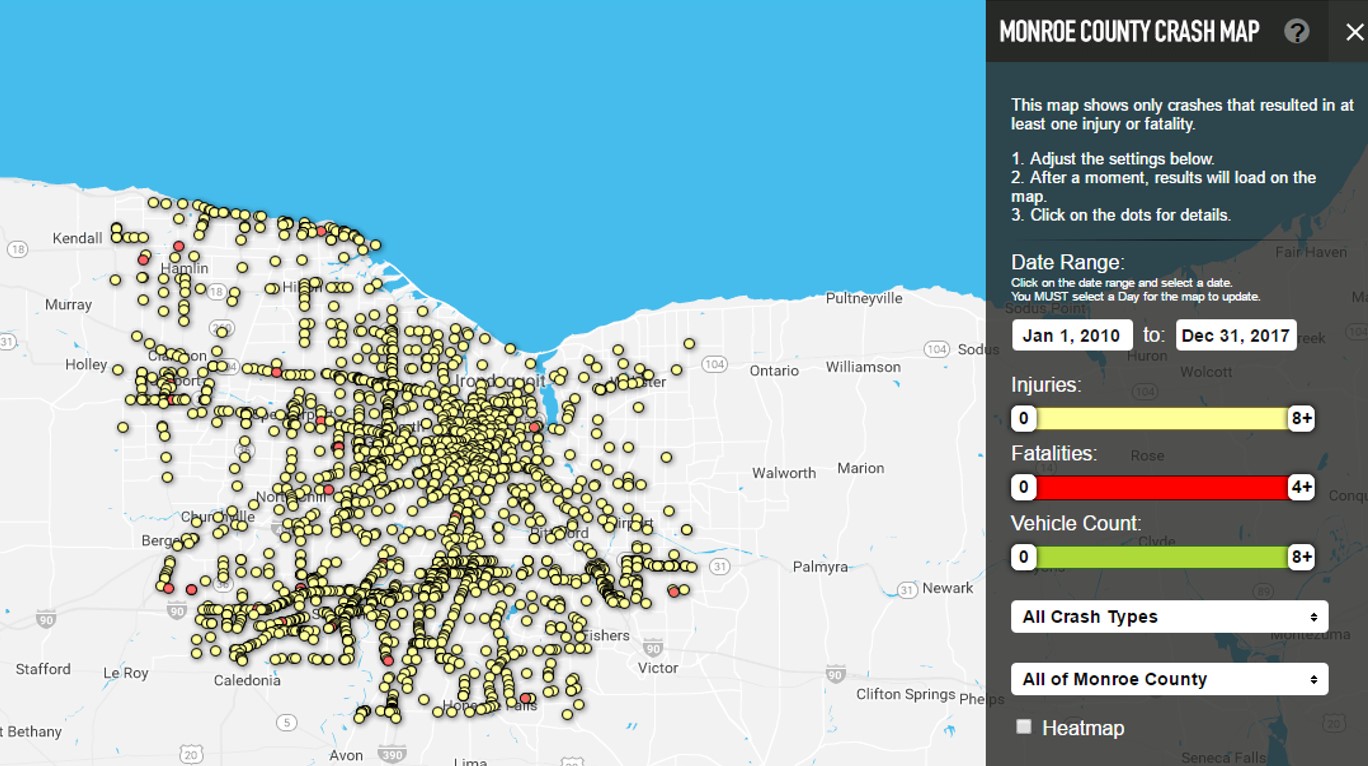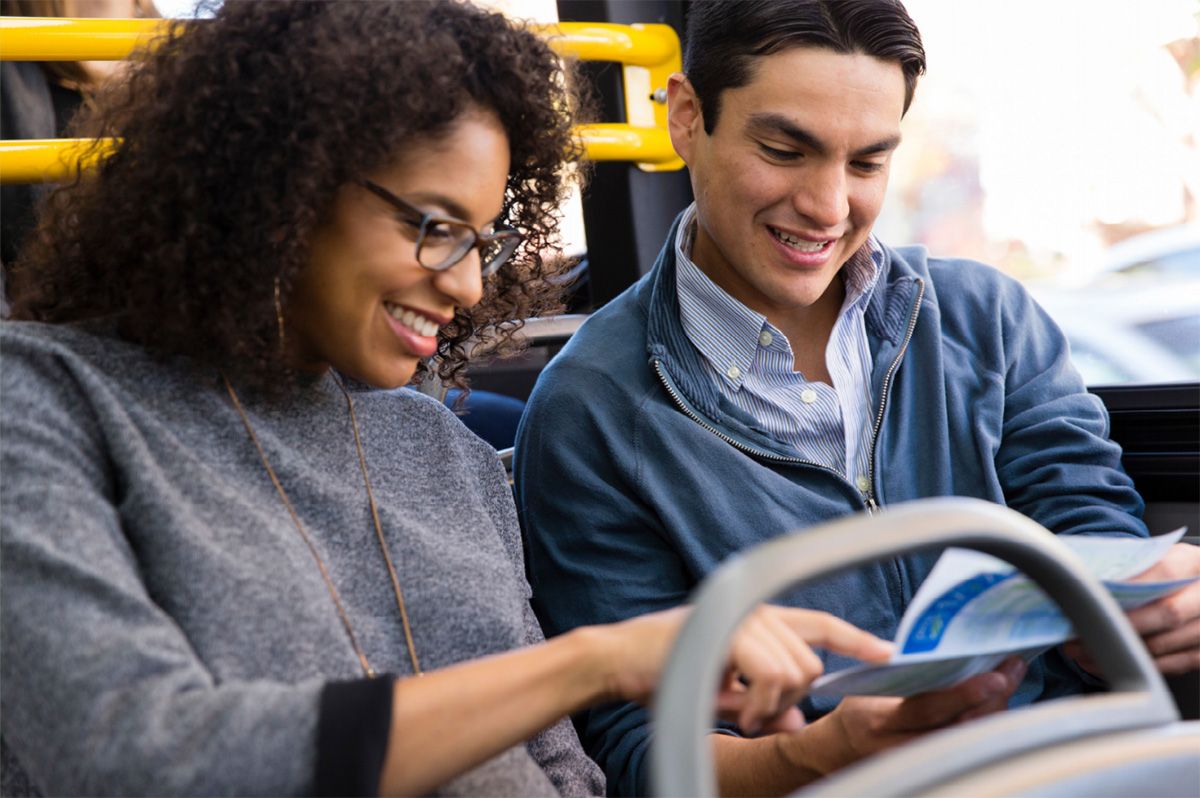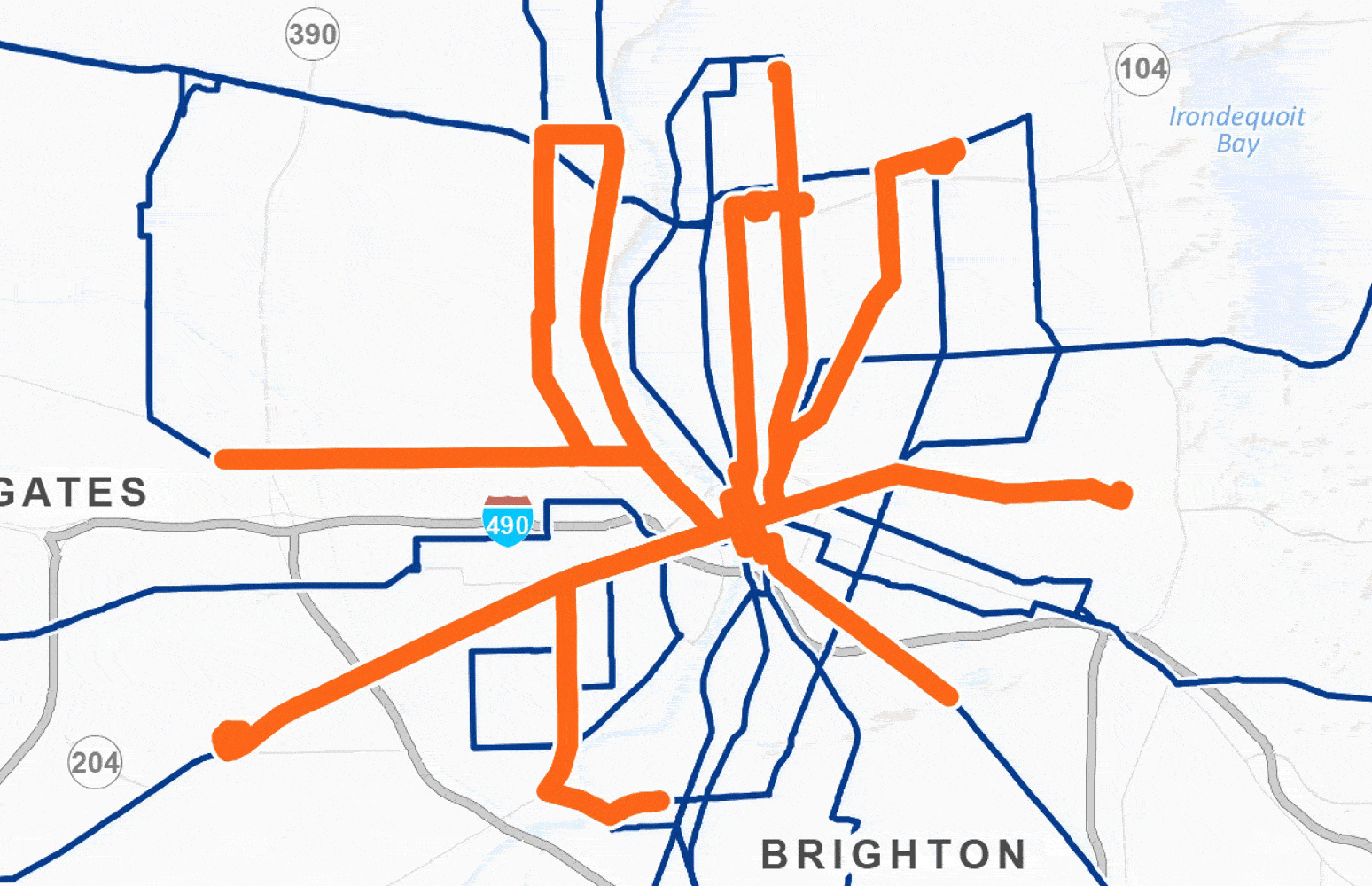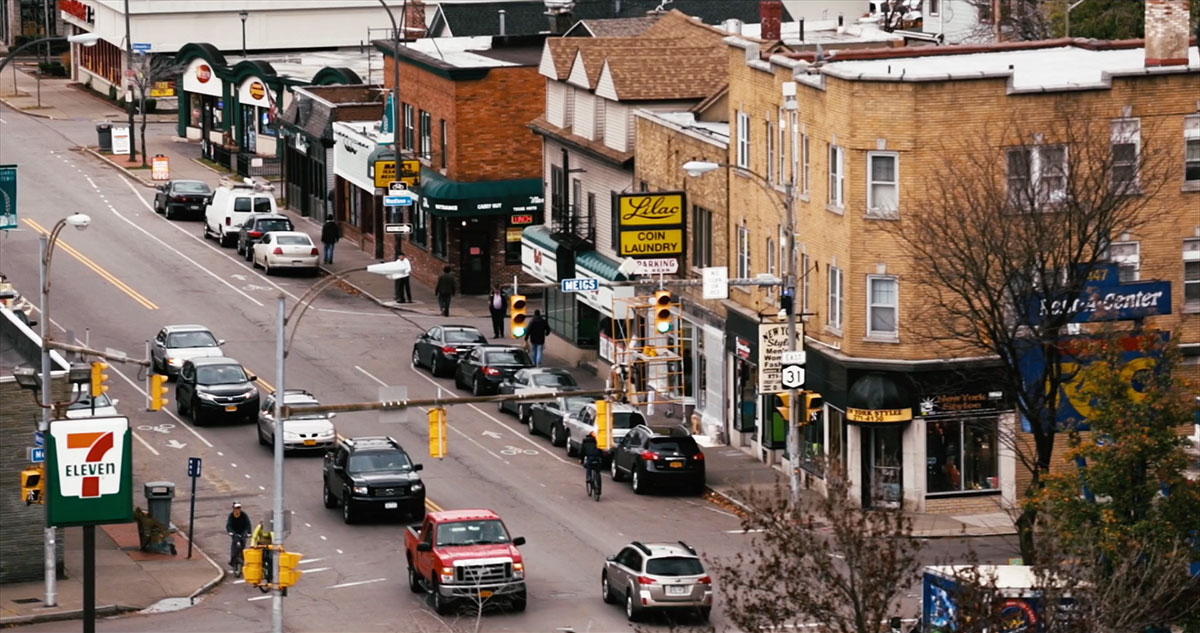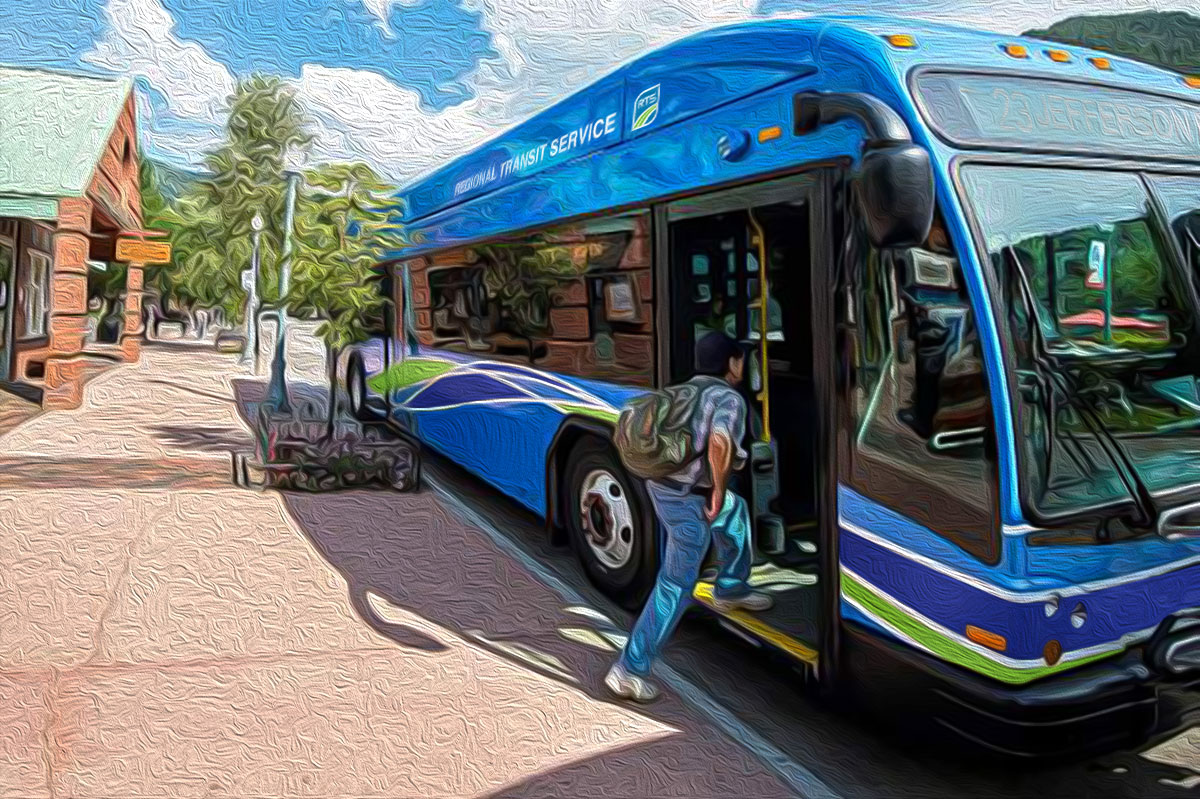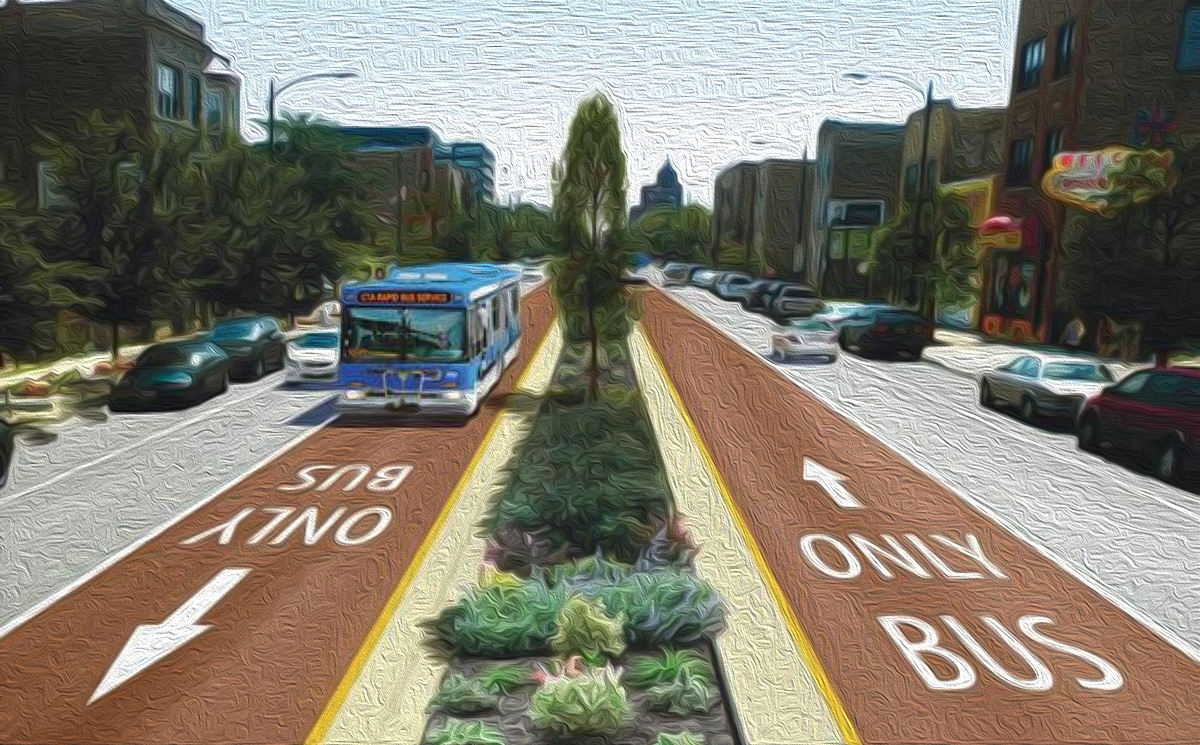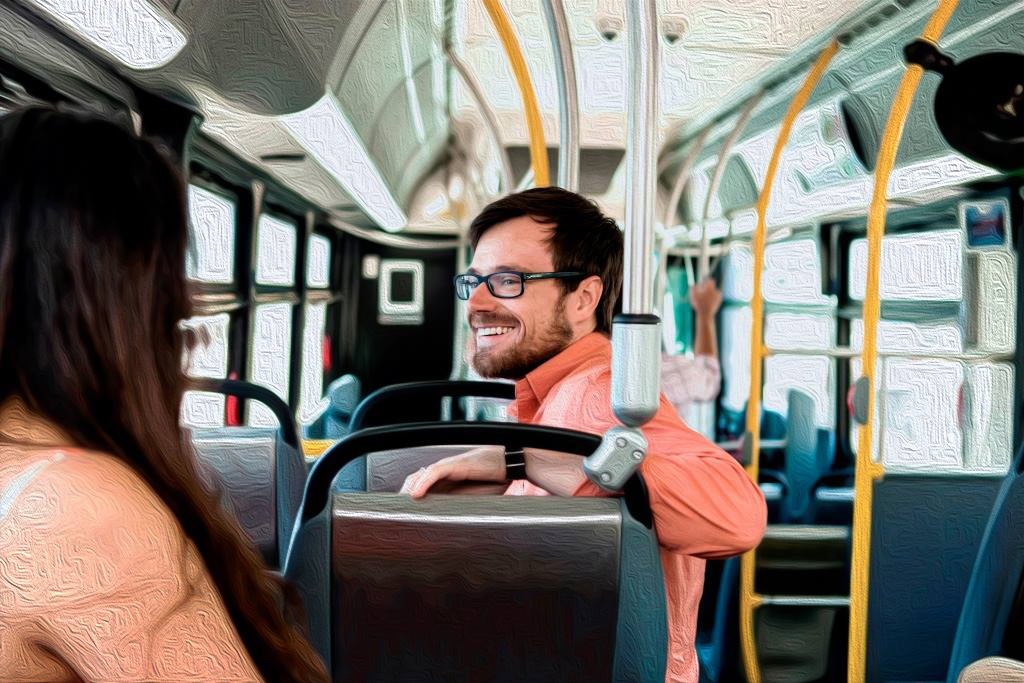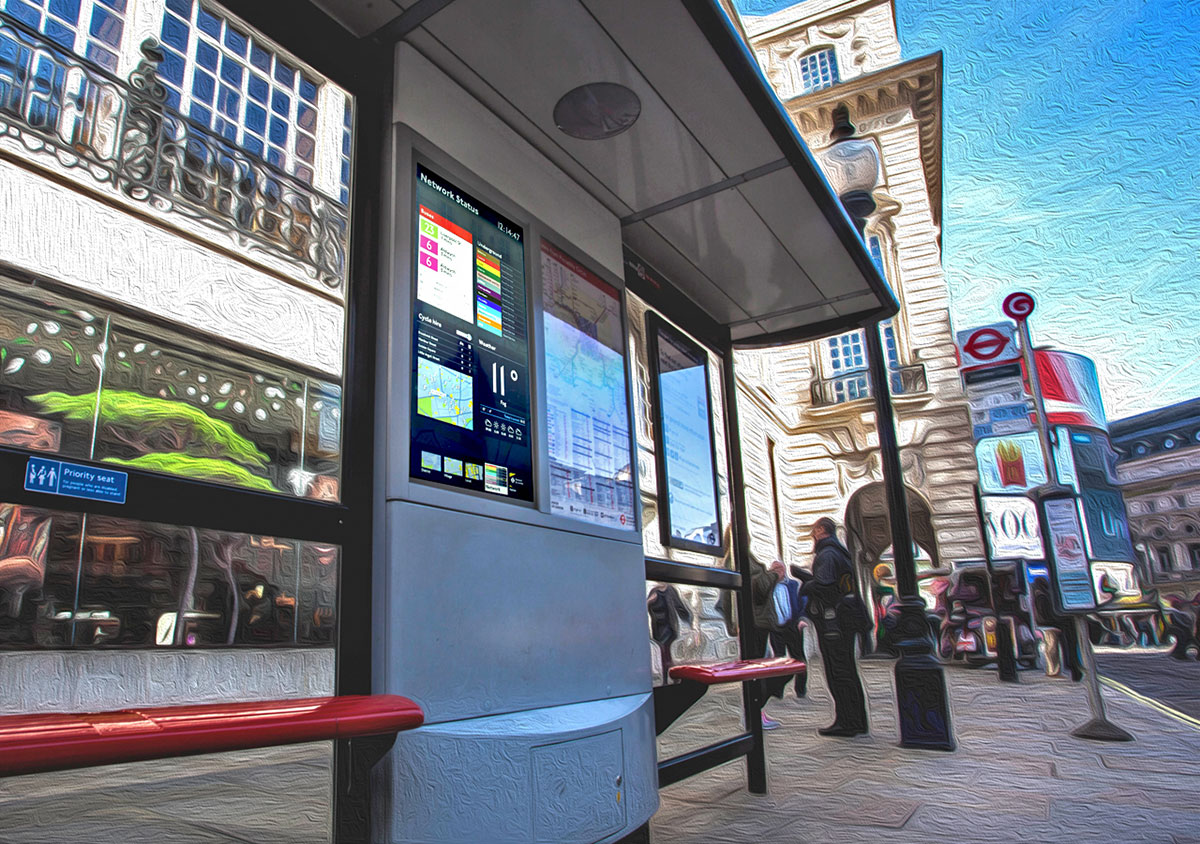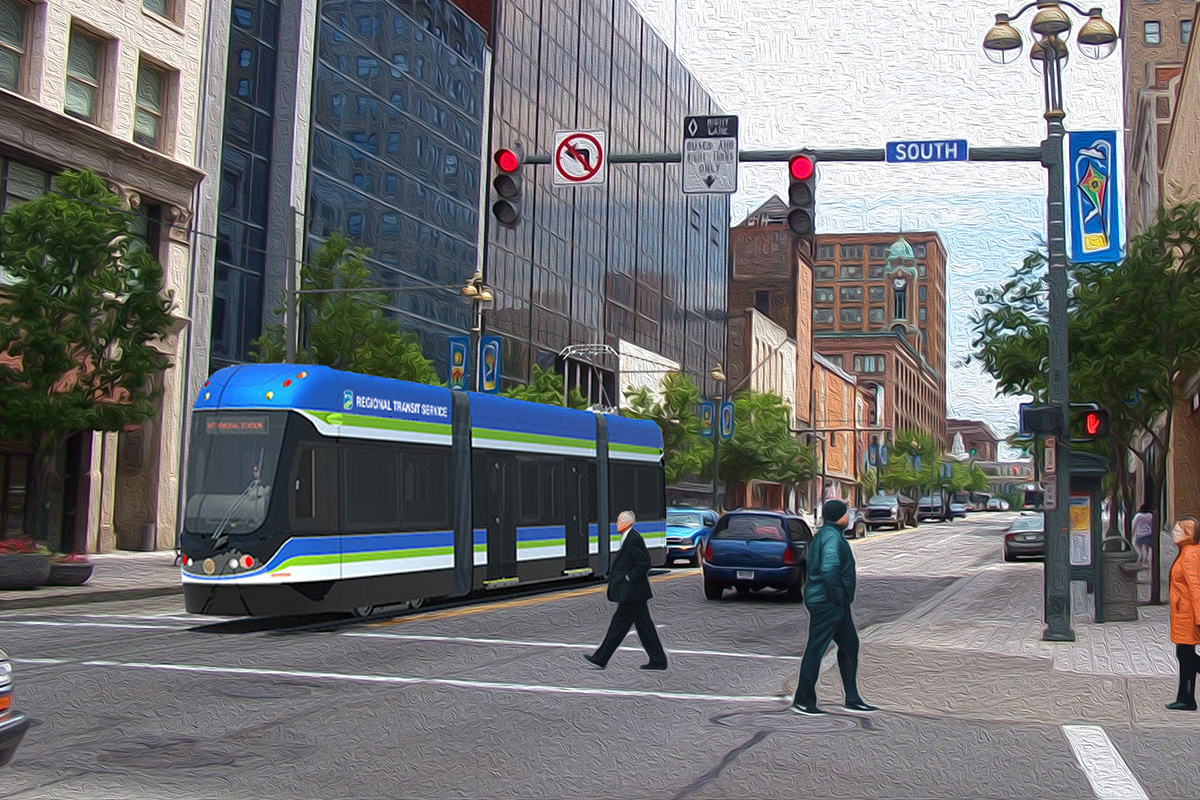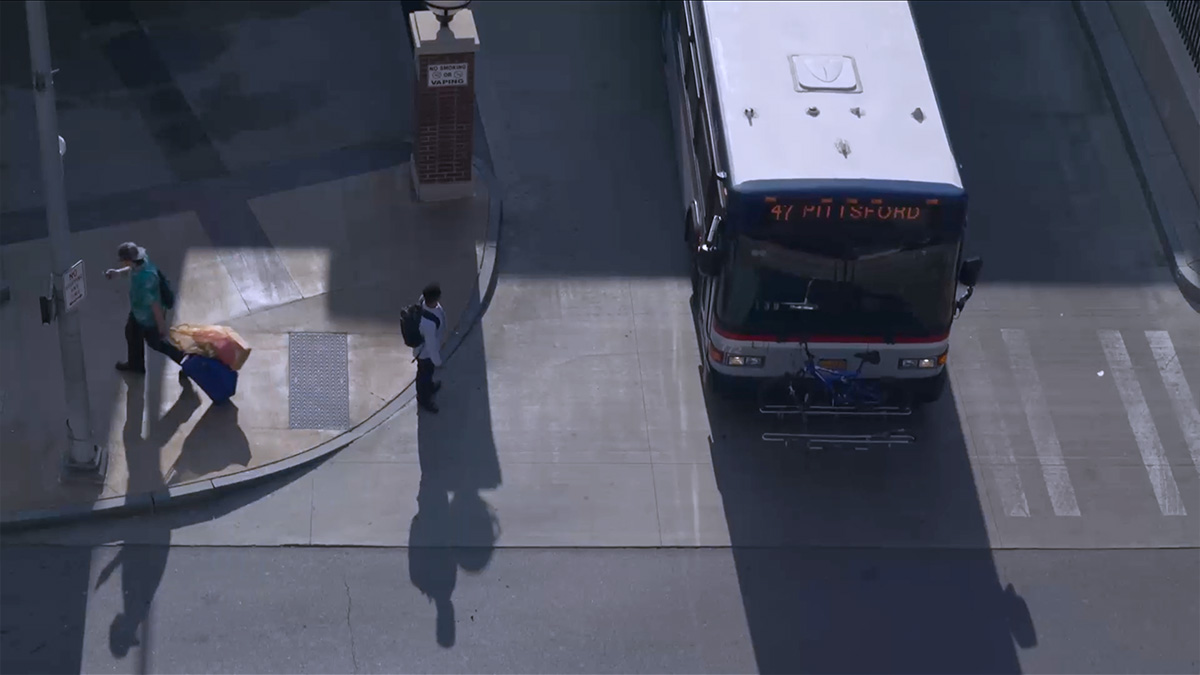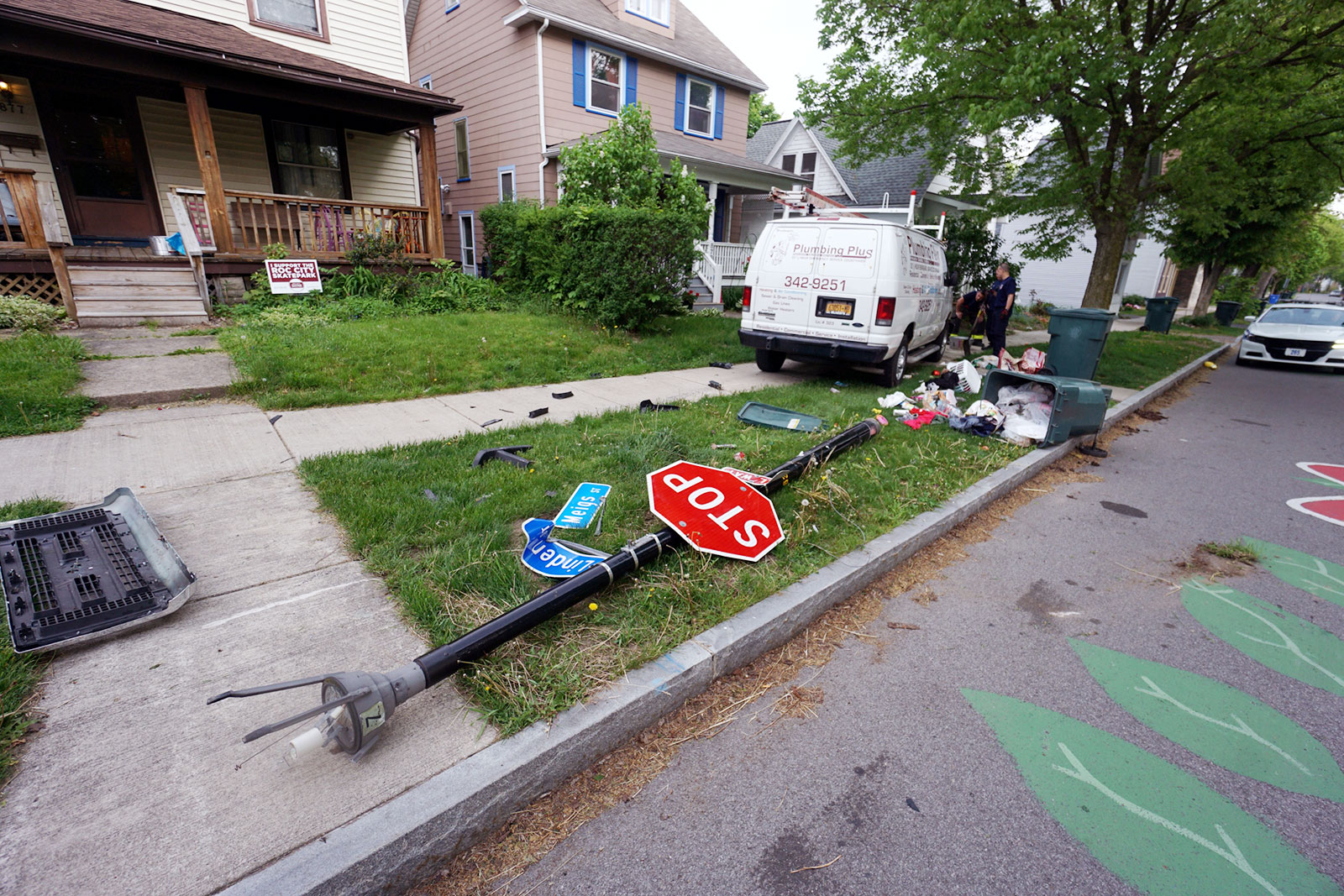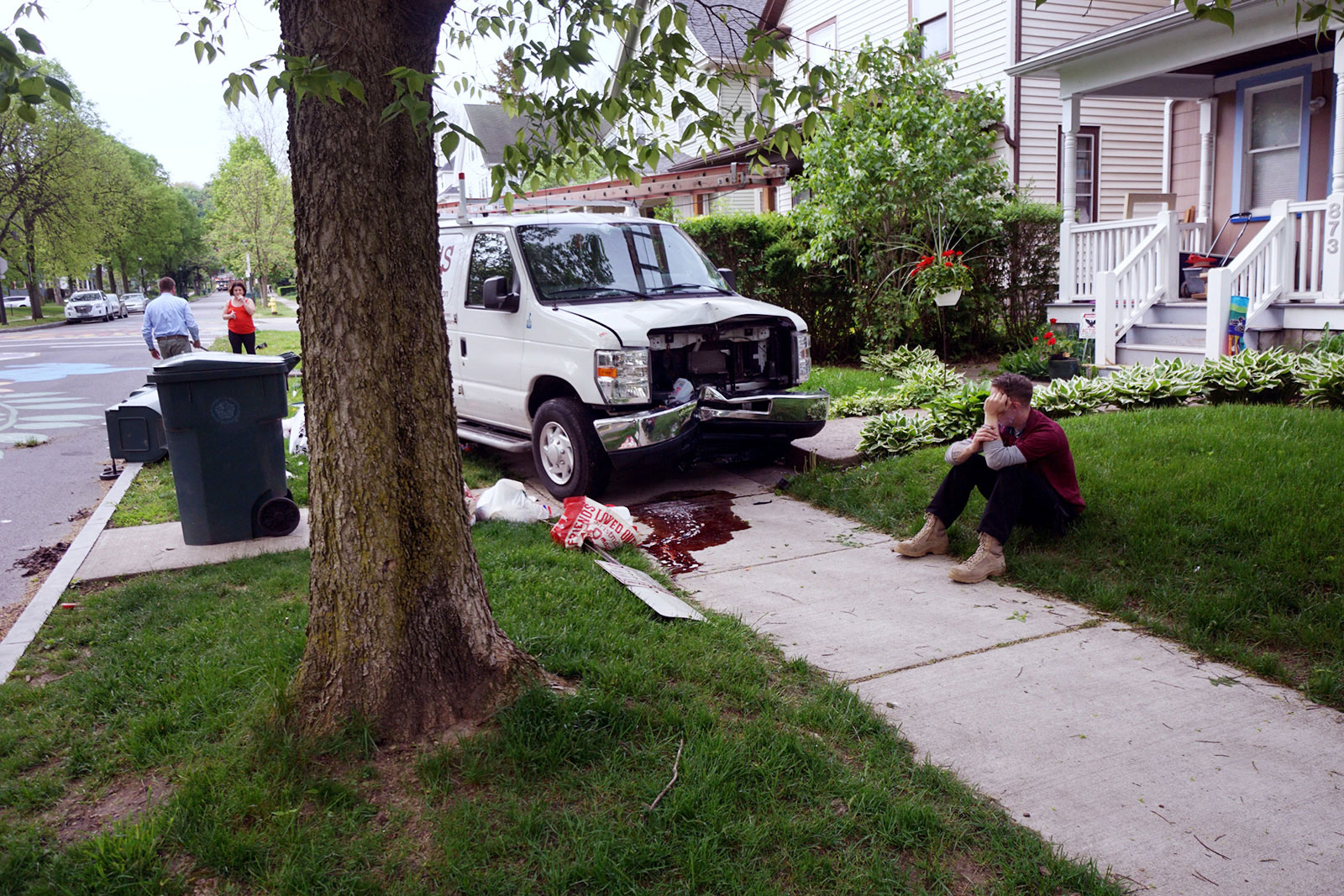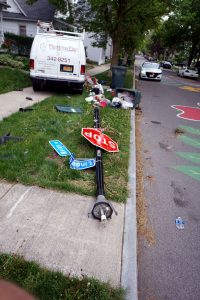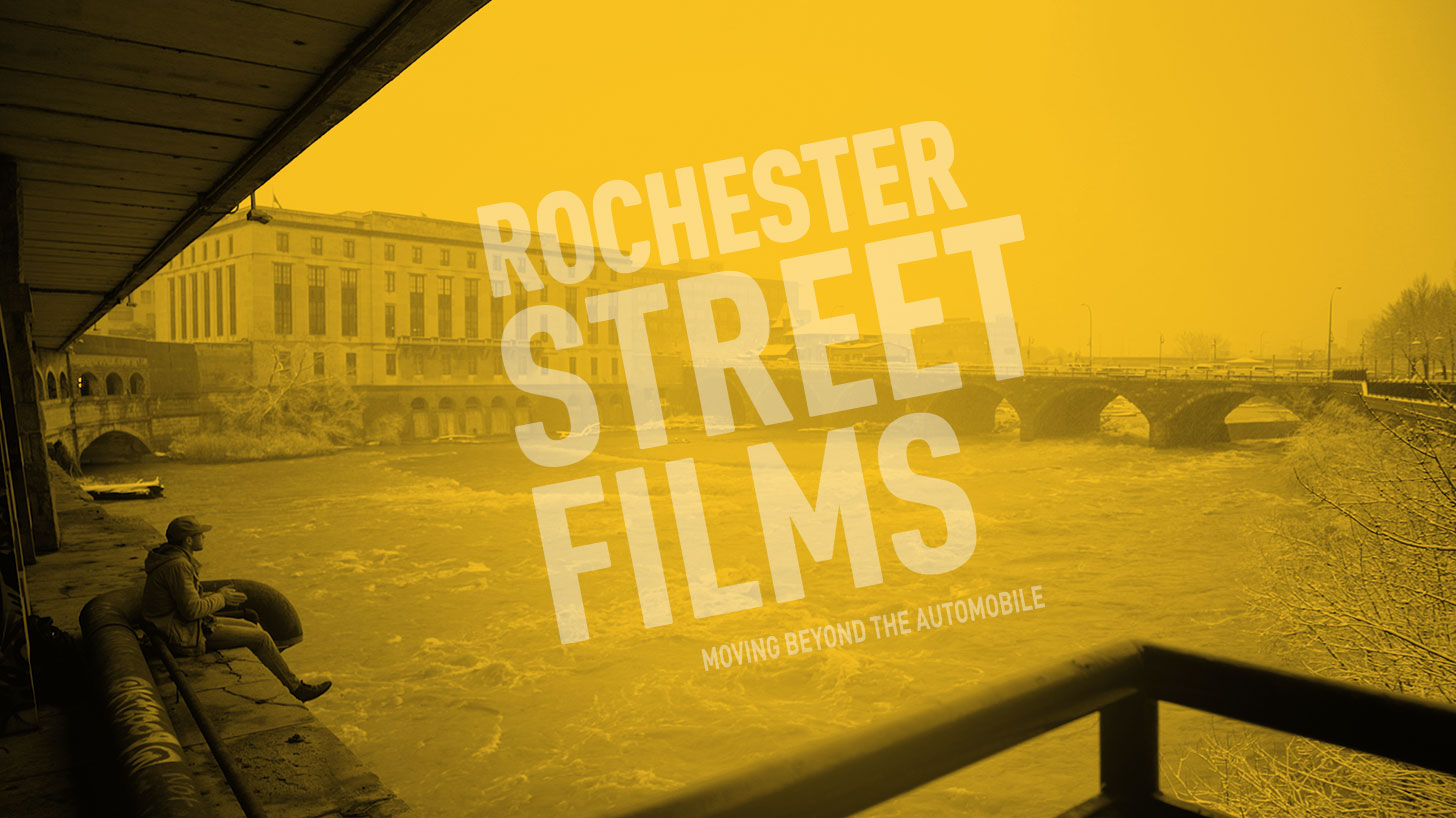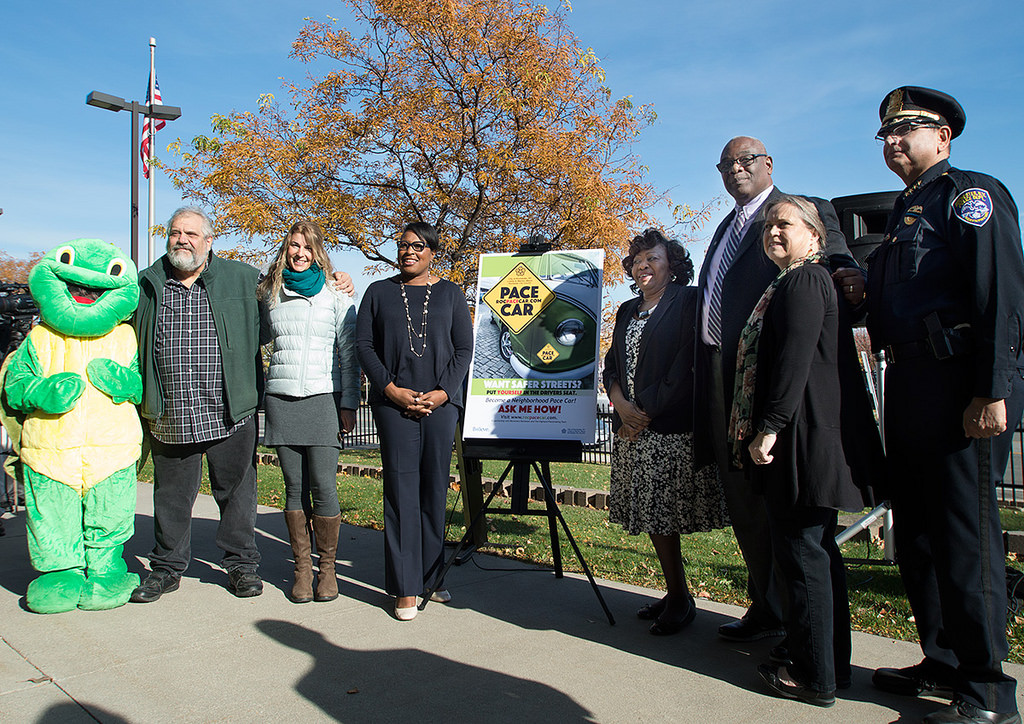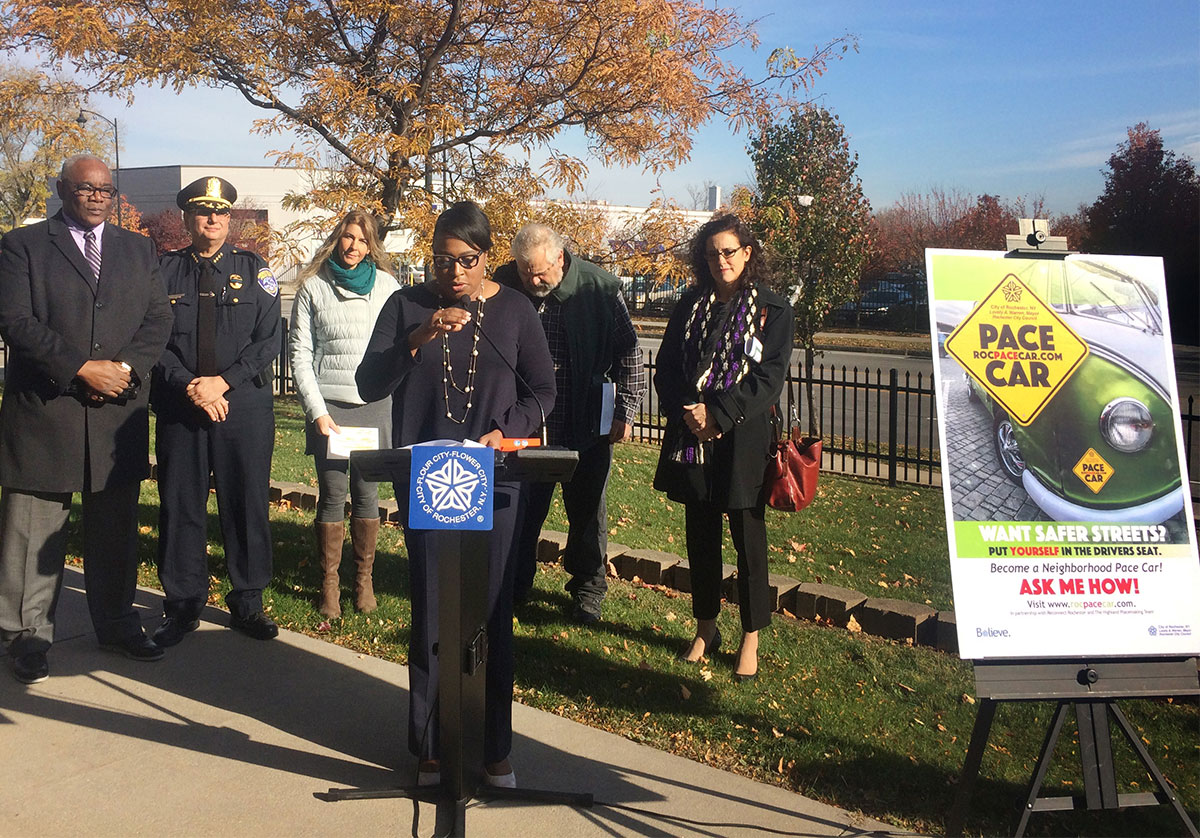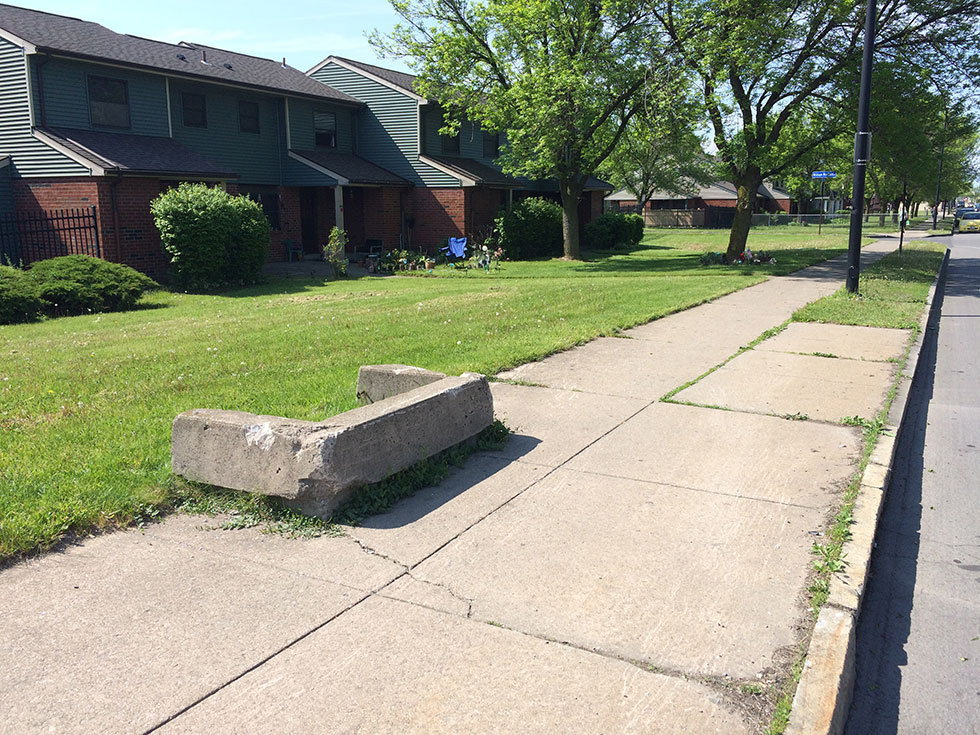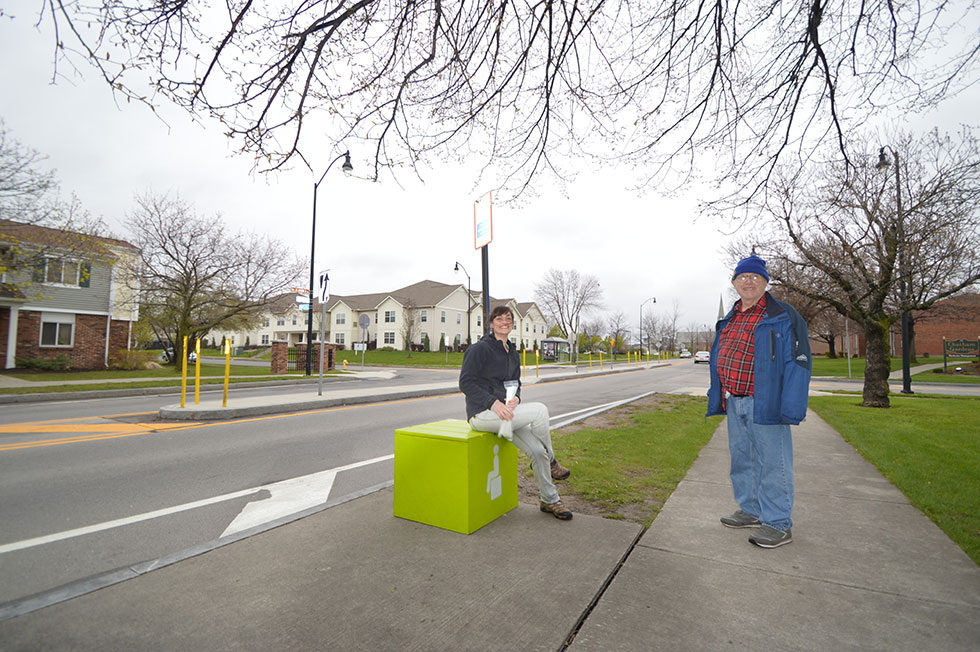On June 10, Reconnect Rochester and an amazing team of partners came together to transform the intersection of Arnett Boulevard and Warwick Avenue in the 19th Ward. This project was our fourth Complete Streets Makeover, completing our ‘quadfecta’ of a project in every quadrant of the city. Before we dive into how we made the magic happen, let’s remember why this program is central to our work and mission at Reconnect Rochester.
Why We Need “Complete Streets”
Across the U.S., we are seeing a spike in pedestrian injuries and fatalities, and Monroe County has been no exception to that. Our Monroe County Crash Map shows that on average, 10 pedestrians and cyclists die from motor vehicle crashes every year. In 2023, we have already lost 7 pedestrians and 3 cyclists on our streets.
Responding to this growing epidemic was the impetus behind the creation of our Complete Streets Makeover (CSM) program in 2018. Our goal is to bring attention to complete street design as one critical factor in creating streets that are safe for everyone. A “complete street” allows everyone—regardless of age, ability or mode of transportation—safe access on that street. It is a street shared by pedestrians, bicyclists, transit riders and motorists.
“Complete Streets are streets for everyone. Complete Streets is an approach to planning, designing, building, operating, and maintaining streets that enables safe access for all people who need to use them, including pedestrians, bicyclists, motorists and transit riders of all ages and abilities.”
Smart Growth America | National Complete Streets Coalition
Selecting Arnett & Warwick
Along Arnett Boulevard in Rochester’s southwest quadrant, 12 crashes with pedestrians and cyclists occurred between 2012-2021 that resulted in serious or traumatic injuries.
Experiencing the harm of this road violence is perhaps what motivated members of the Arnett Block Association to nominate the intersection of Arnett & Warwick for a Complete Streets Makeover. The submission was the most extravagant we’ve ever received, complete with a compelling narrative, stated commitments from neighborhood organizations, and a host of images and videos (check one of them out here) providing evidence and testimony from concerned community members who wanted to see change.
In reviewing this nomination and judging the location by a set of established criteria, our Steering Committee was convinced that Arnett and Warwick presented the right mix of community support, evidence of safety concerns, and had great potential for a street redesign. A Complete Streets Makeover at the intersection would create real, transformative change for the community through this project.
This intersection is also at the heart of a community hub featuring the Arnett Branch Library, the family-owned Arnett Cafe and School #16 right around the corner. Because of the proximity to kids, there was an emphasis on improving safety for children and families, the community’s most vulnerable road users.
Gathering Community Input
We kicked off the project with a community workshop in February 2023 at the Arnett Branch Library Community Room. Over 40 community members came out to share their experiences, identify the issues that they have seen along this corridor, and offer their ideas and solutions to improve safety and create a welcoming space.
Common issues identified by the community included: lack of crosswalks across Arnett Boulevard, frequent speeding, and low visibility of cars for pedestrians.
Common solutions identified by the community included: installing crosswalks, curb bumpouts, more signage and installing beautification features and pedestrian infrastructure including benches and planters.
The Stantec Team provided a map and transfer paper so that community members could draw street design elements and solutions.
Following the workshop, the Stantec team got to work creating a rendering that would reflect the community’s input, and bi-weekly meetings with a core group of neighbors commenced to begin planning for the many aspects of the event: the street mural, food, music, a parklet outside of the library, and other placemaking elements. The community identified neighborhood artist Richmond Futch Jr. to lead the design and implementation of the street mural which would become a focal point of the project and a crucial design element to capture the attention of drivers and encourage them to slow down.
Richmond’s initial design of the street mural:
Stantec’s design rendering incorporating Richmond’s design and the community’s input:
You can imagine that at this point during the process, there was a lot of excitement and energy looking forward to the day of the event where we would bring this all to life.
Making the Magic Happen at Arnett & Warwick
After much planning, over 100 people came out to Arnett & Warwick on June 10 to make the magic happen! Attendees were made up of people from the neighborhood, youth organizers and leaders from The Center for Teen Empowerment, children from School No. 16, and a team of community partners*. Together, we worked to make the intersection of Arnett Blvd and Warwick Avenue a more vibrant, safer place for everyone.
Design elements to calm traffic and improve safety included curb bump outs with bollards to slow cars turning onto Warwick or Arnett, and a street mural. Other elements to beautify the space included:
- A wishing tree where community members can leave positive messages to uplift others
- Flower planters made from repurposed bus stop cubes
- A built out parklet that used a parking space in front of the Arnett Branch Library and transformed it into a kid-friendly space with colorful benches, turf, a copycat Simon Says game and hopscotch.
View more photos of the day here, courtesy of Healthi Kids.
Nothing captures the life of a project better than film. Reconnect Rochester is pleased to share this short film, produced by Floating Home Films, that tells the full story.
The Impact
But did it make a difference? YES! Data collected before and after the implementation (April and July, respectively) shows a measurable decrease in vehicle speeds along Arnett & Warwick.
After implementation, the 85th percentile speed (the speed that 85% of vehicles travel at or below) declined 9% and the average speed declined 10%. When it comes to speed, each mile-per-hour a driver is traveling makes a difference for pedestrian and cyclist safety, and can be the difference between life and death or a person sustaining life altering injuries.
The impact of vehicle speed in pedestrian collisions (The Healthi Kids Coalition)
The City of Rochester has already approved a permanent crosswalk for the intersection as a direct result of this project, so the neighborhood can look forward to that coming soon!
Looking Ahead
Our awesome team is taking one year off in between projects, but we’ll be back in mid-2024 with a public call for submissions, so keep taking note of the intersections and trouble spots you experience in your daily travels that could use a Complete Streets Makeover! Together, we’ll keep advocating to design our streets for people, and we’ll keep making it happen one intersection at a time.
Community Partners
The Complete Streets Makeover of Arnett & Warwick was a collaborative venture with the following community partners:
and,
Richmond Futch, Jr., 19th Ward Neighborhood Artist
Amy Schramm, School 16 Art Teacher
Funding Support
This project is supported with funding provided by ESL Charitable Foundation, The Community Foundation, Genesee Transportation Council, and New York State Department of Health’s Creating Healthy Schools and Communities initiative.


